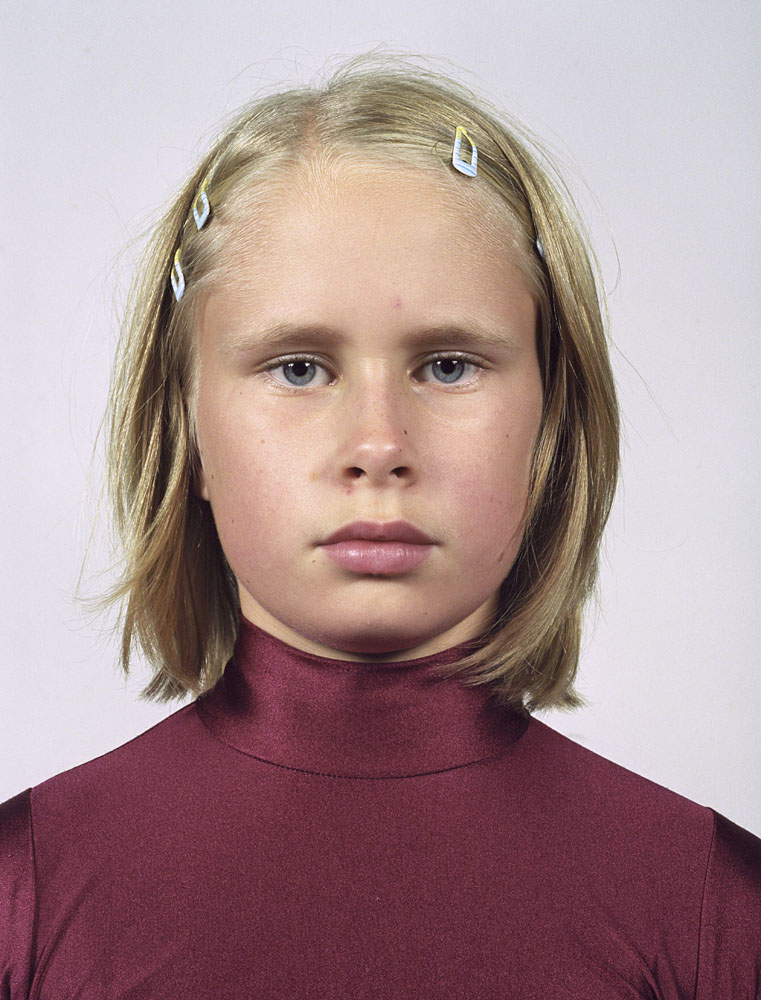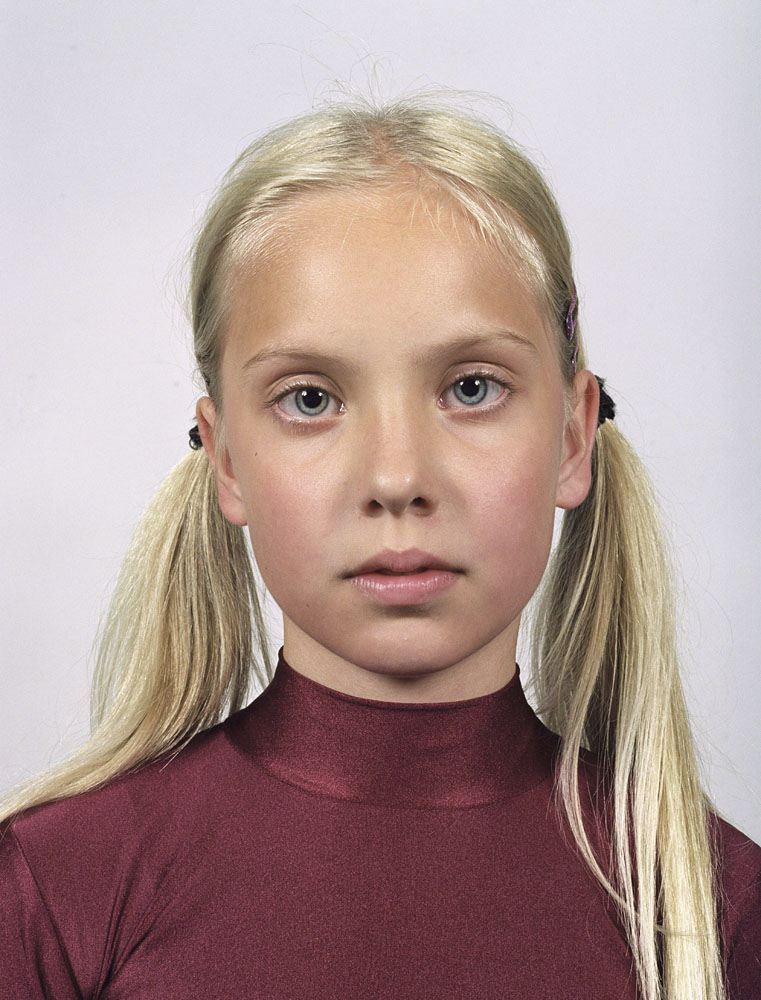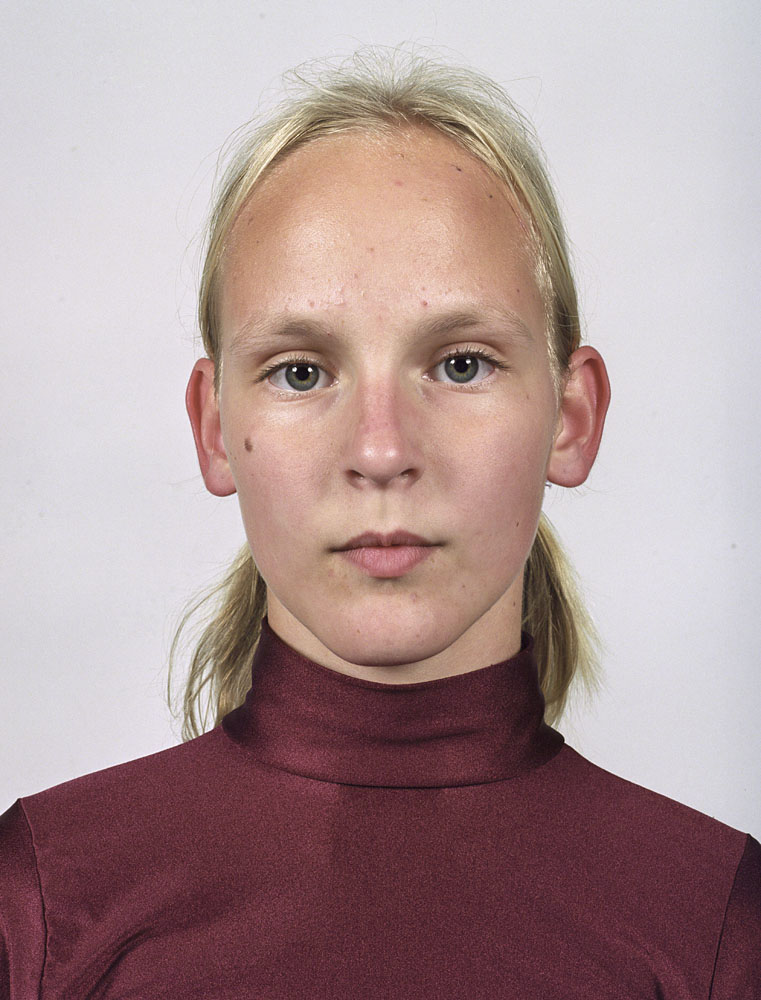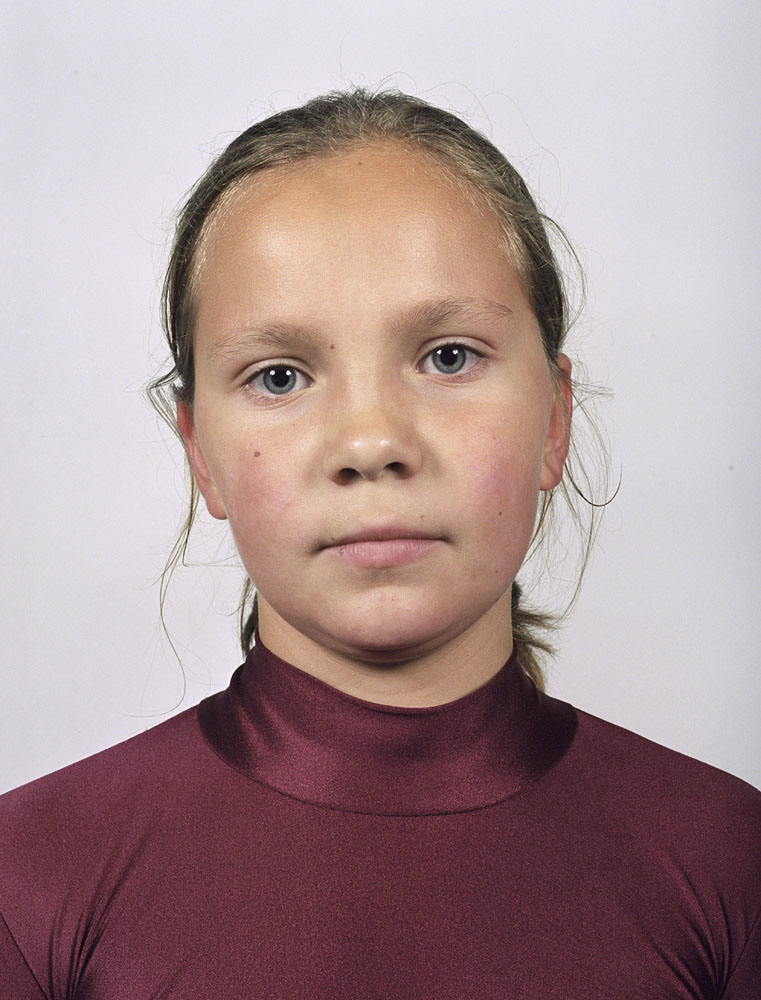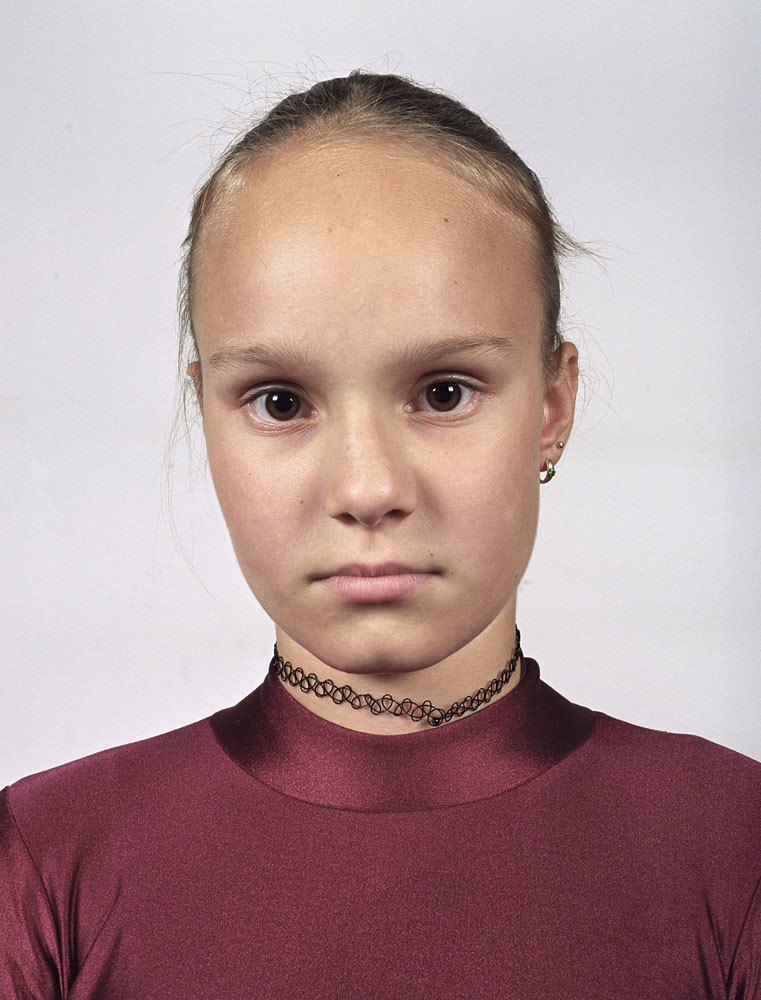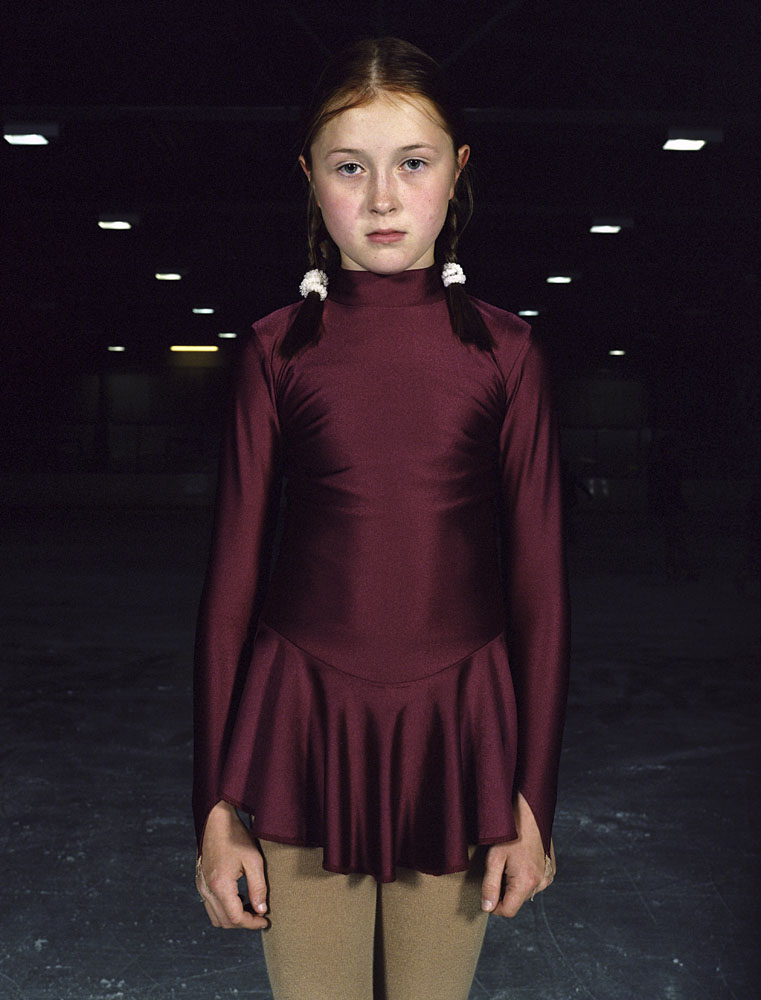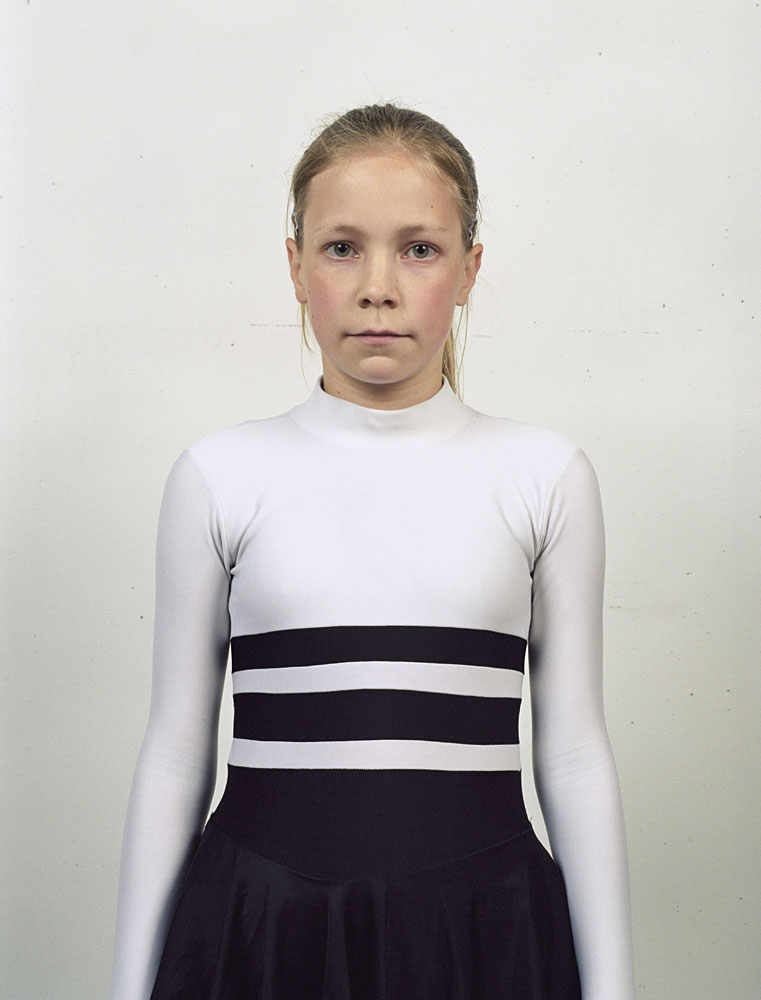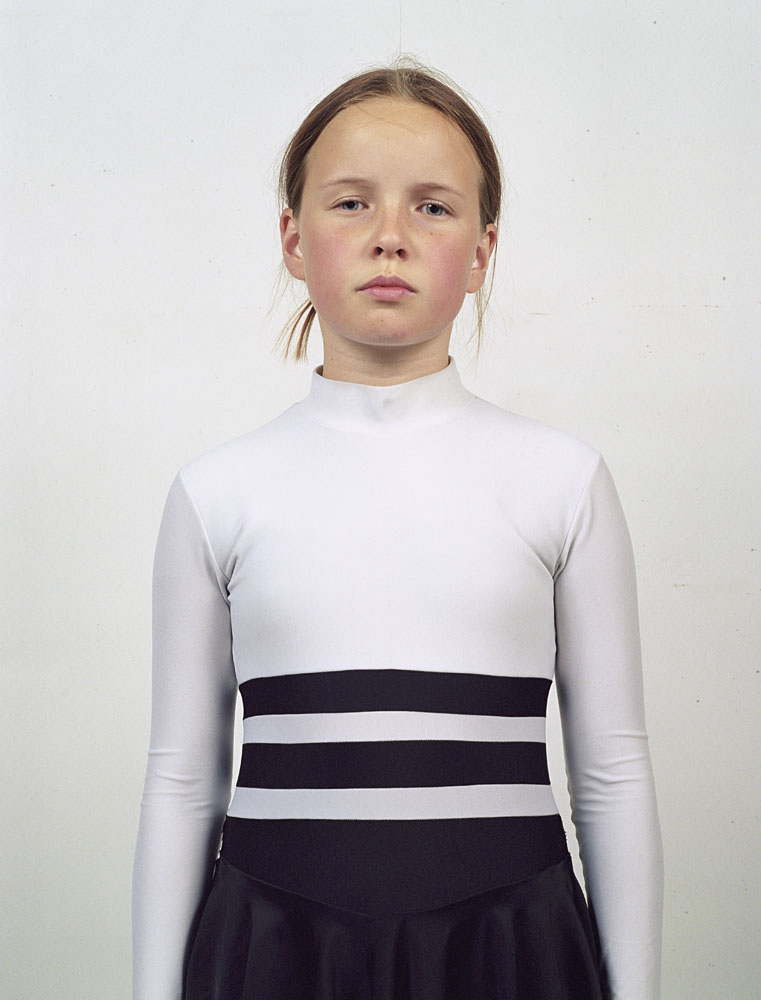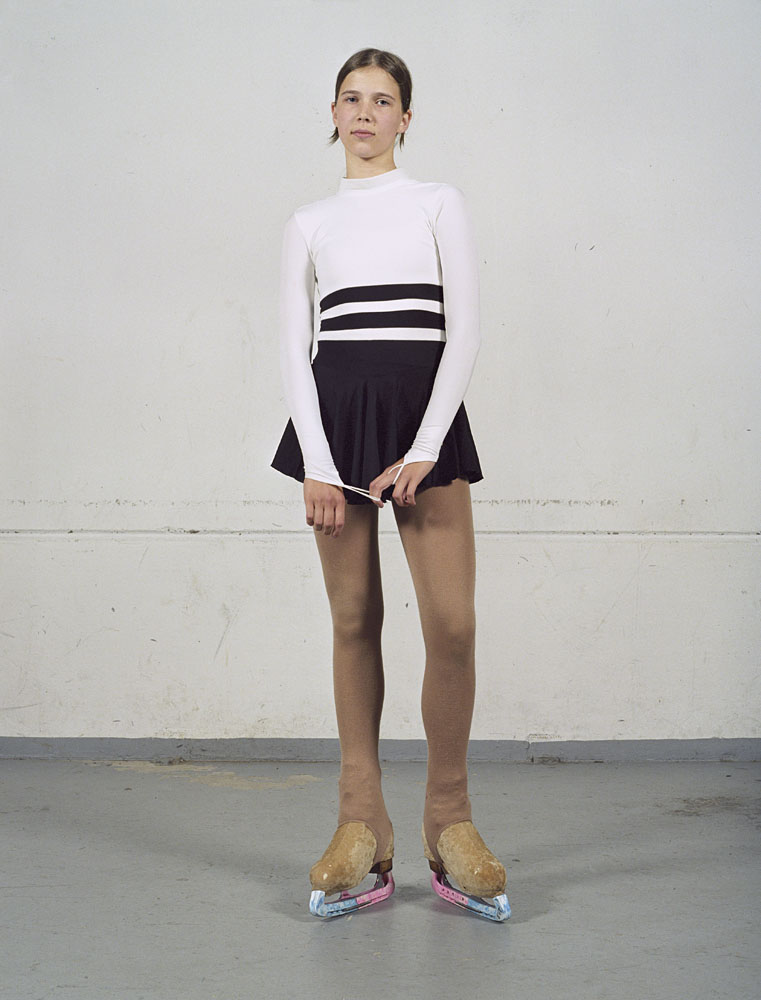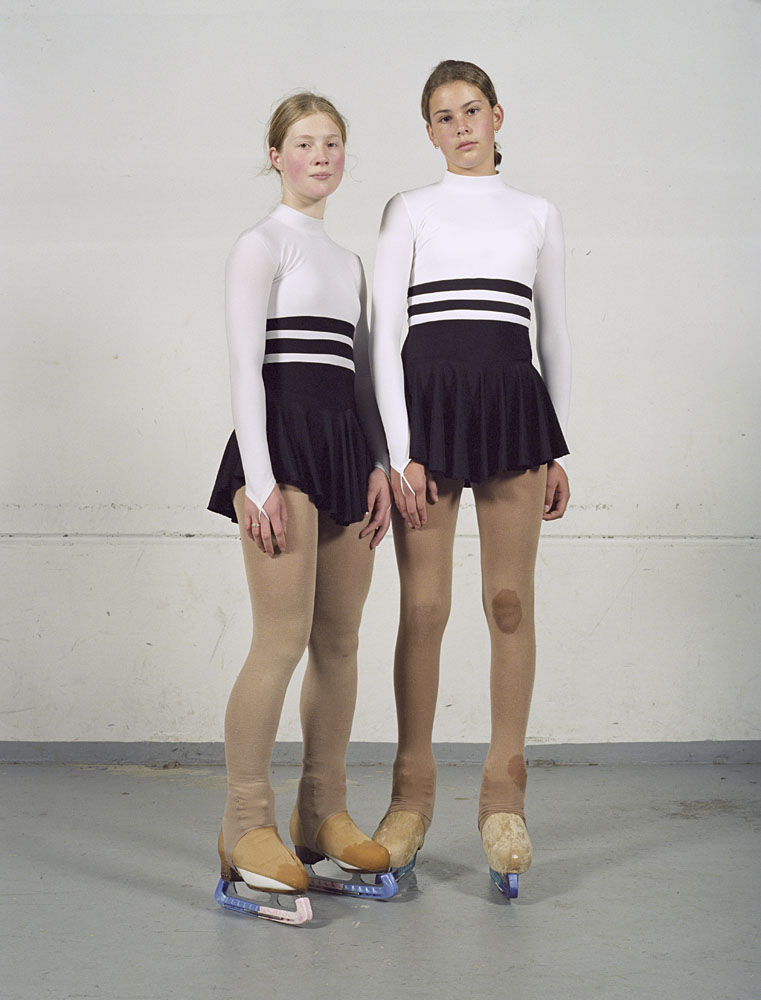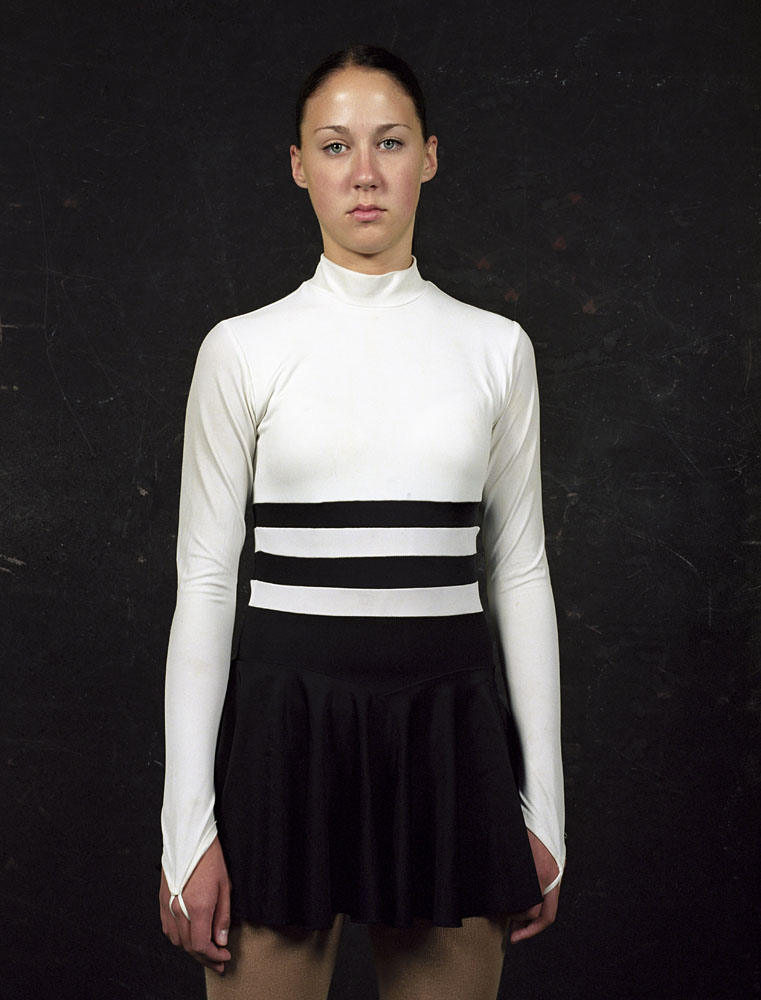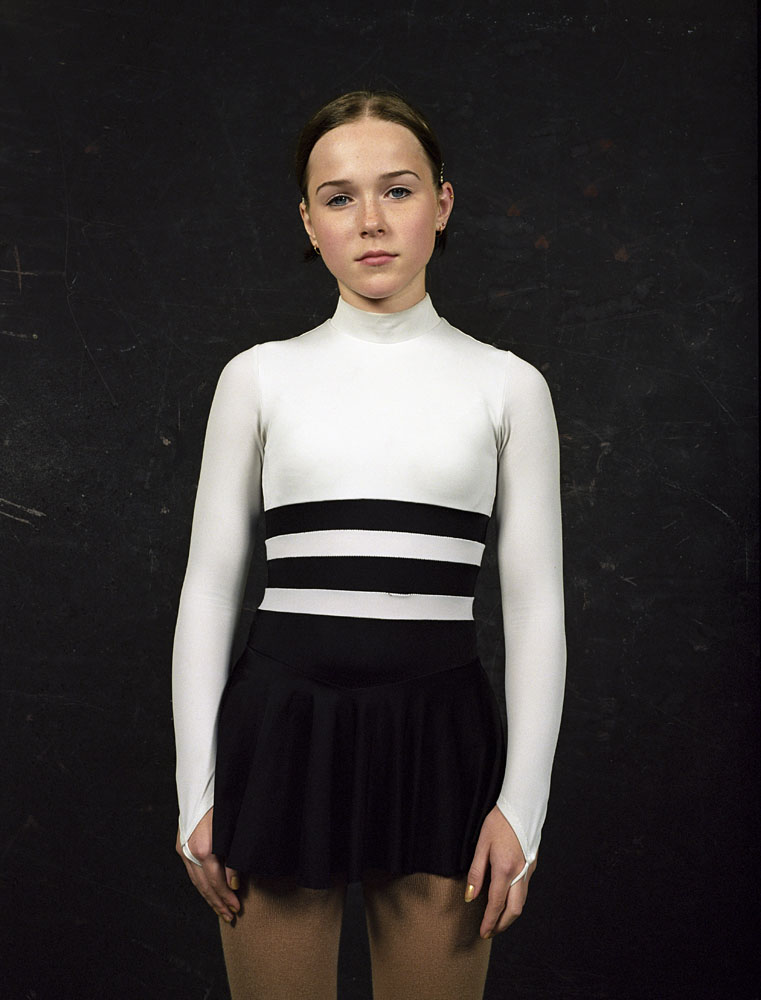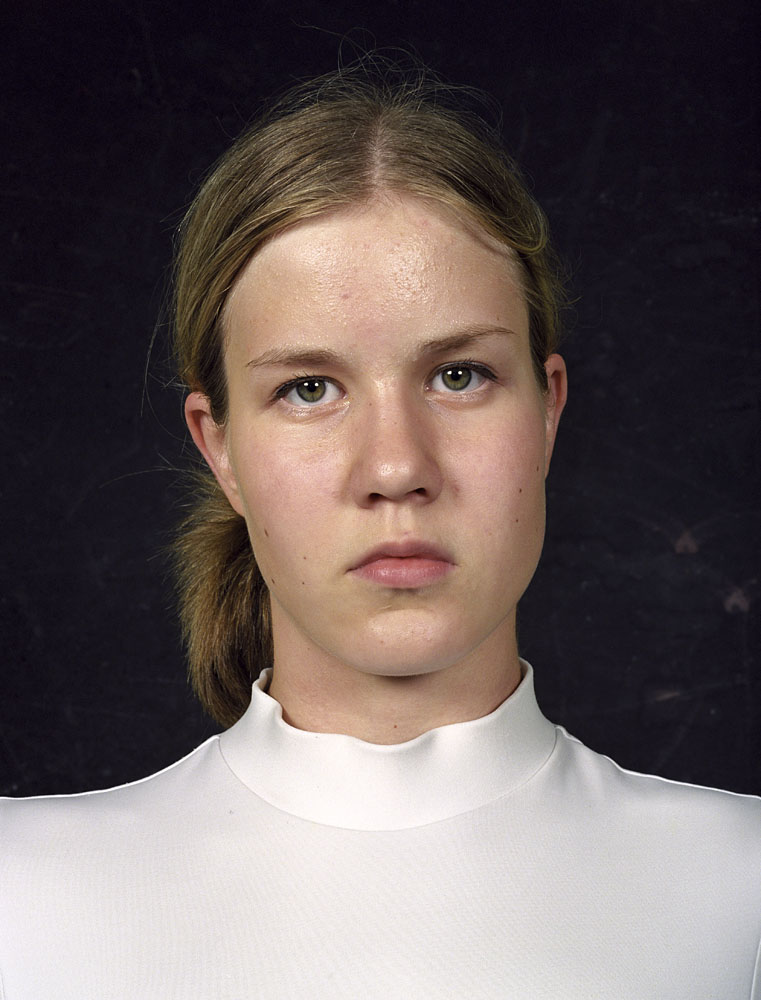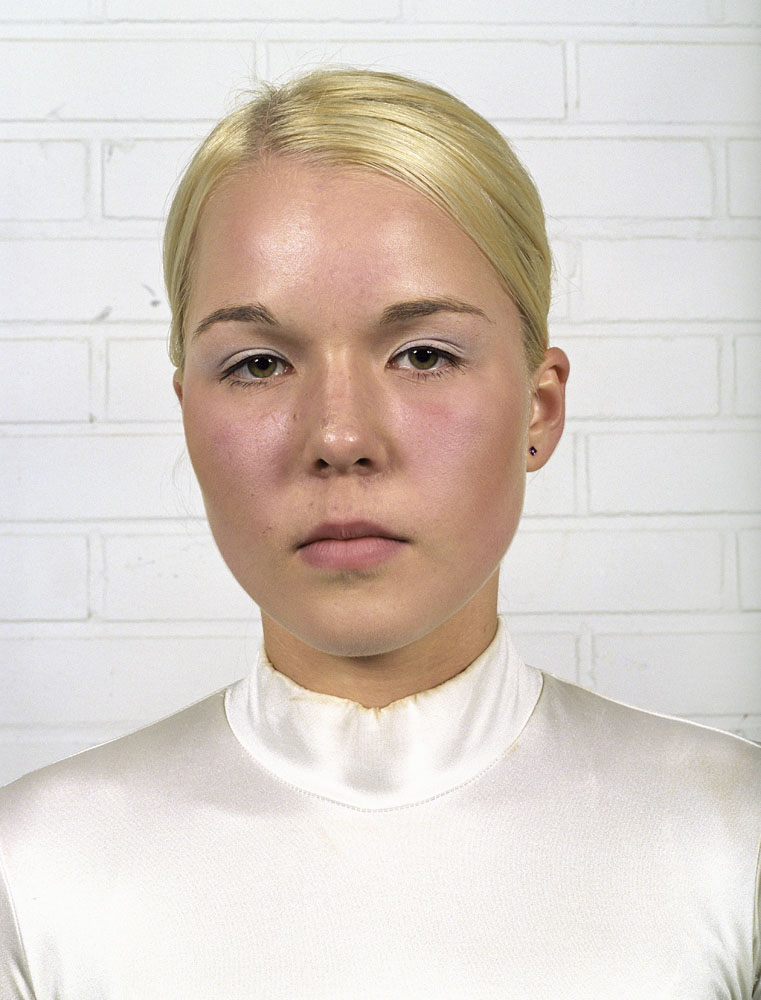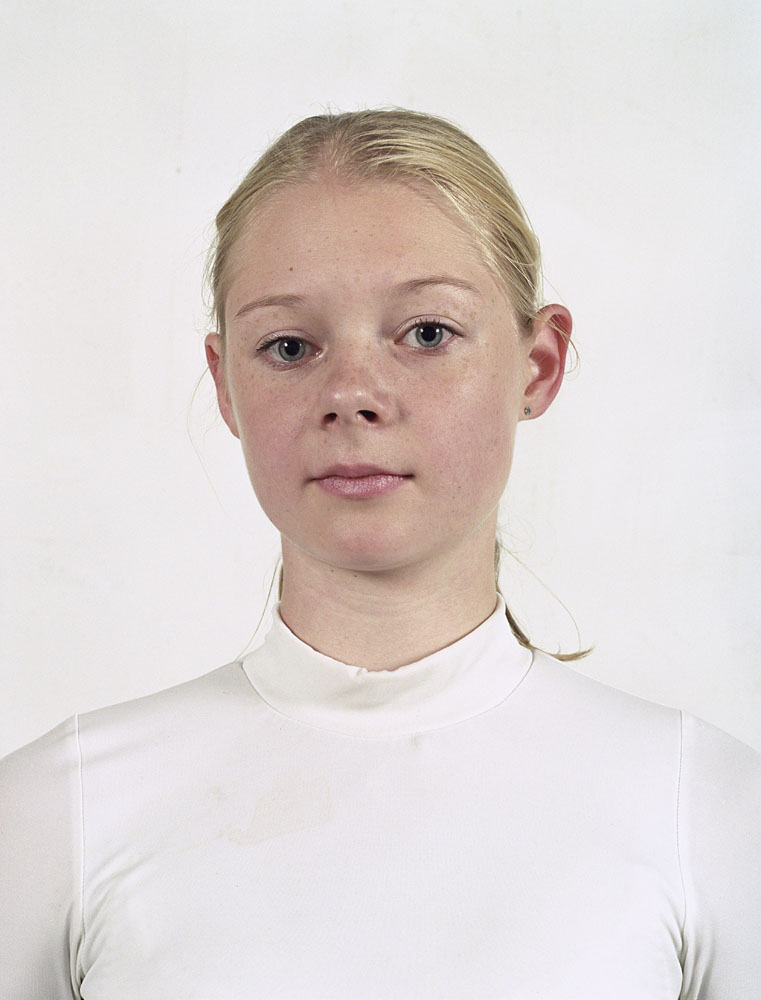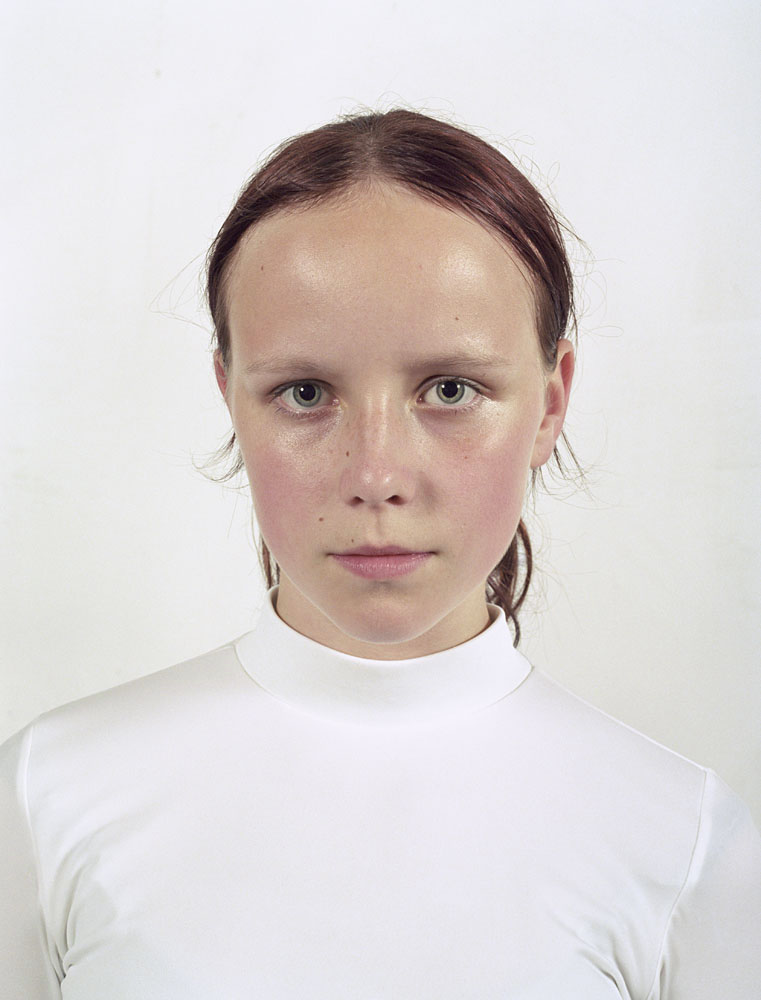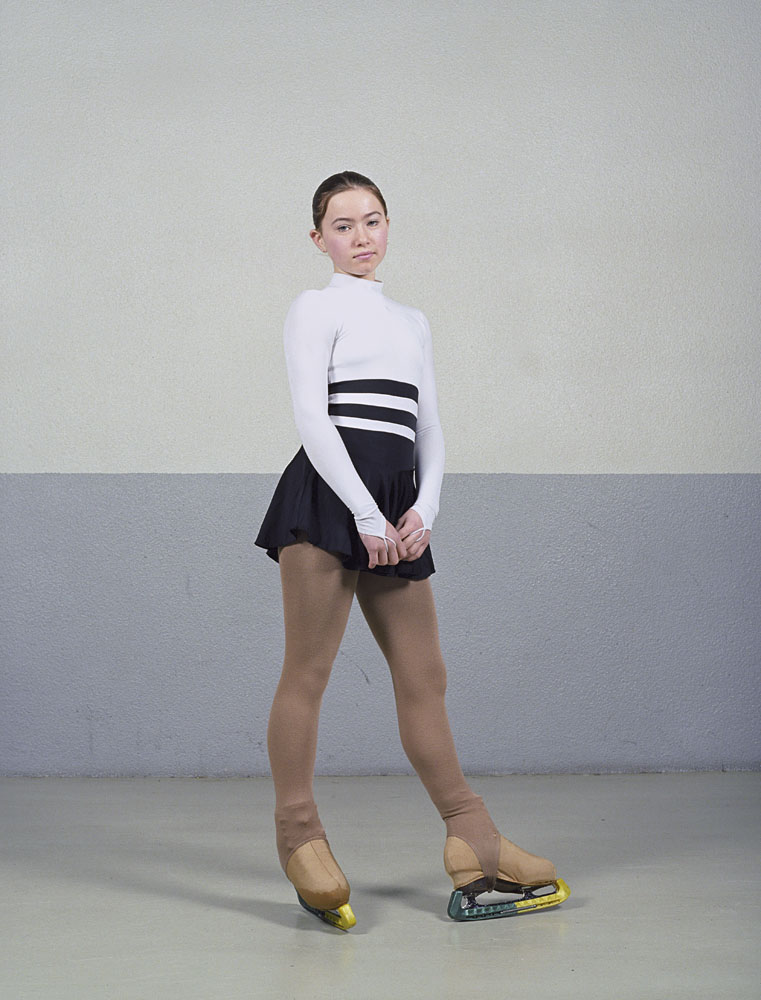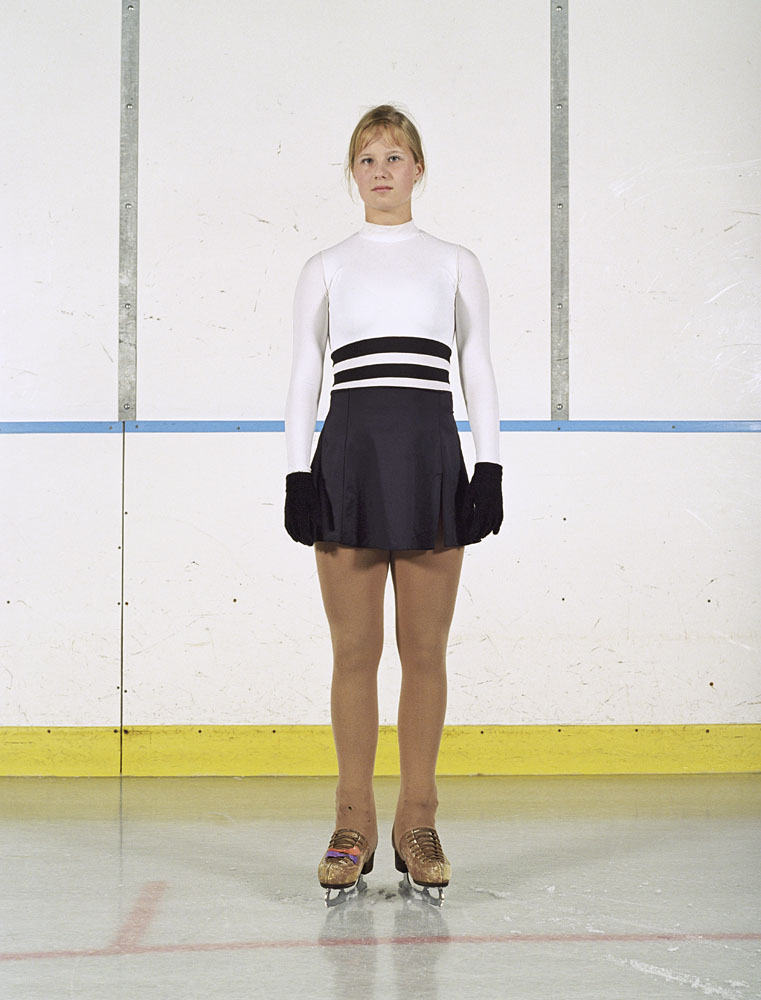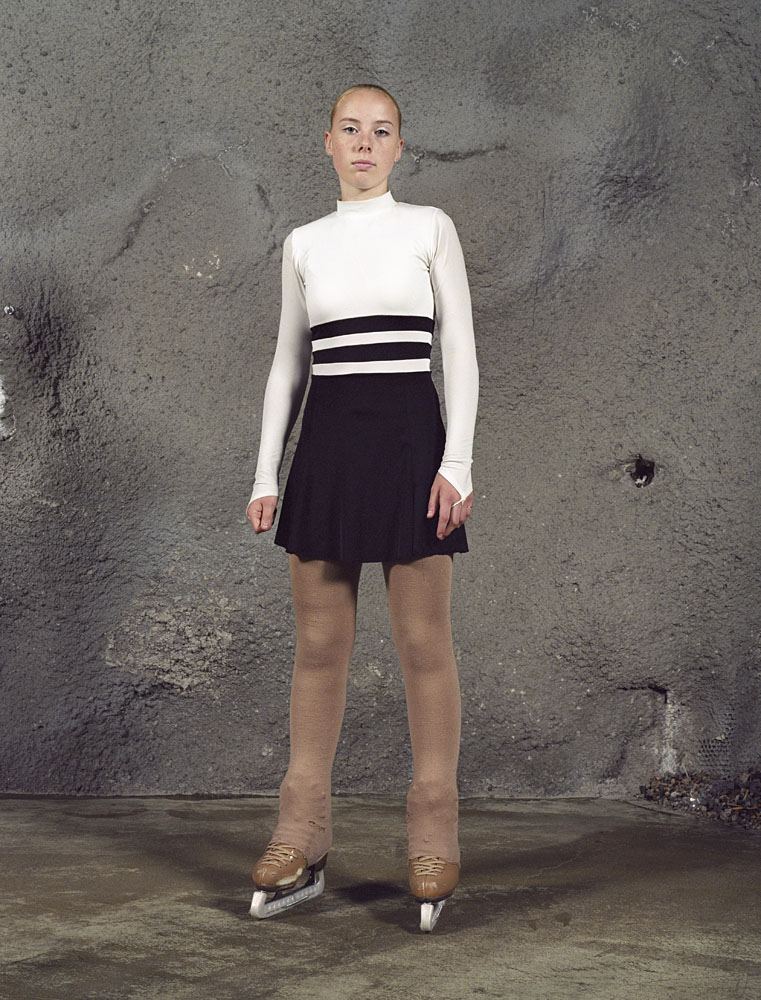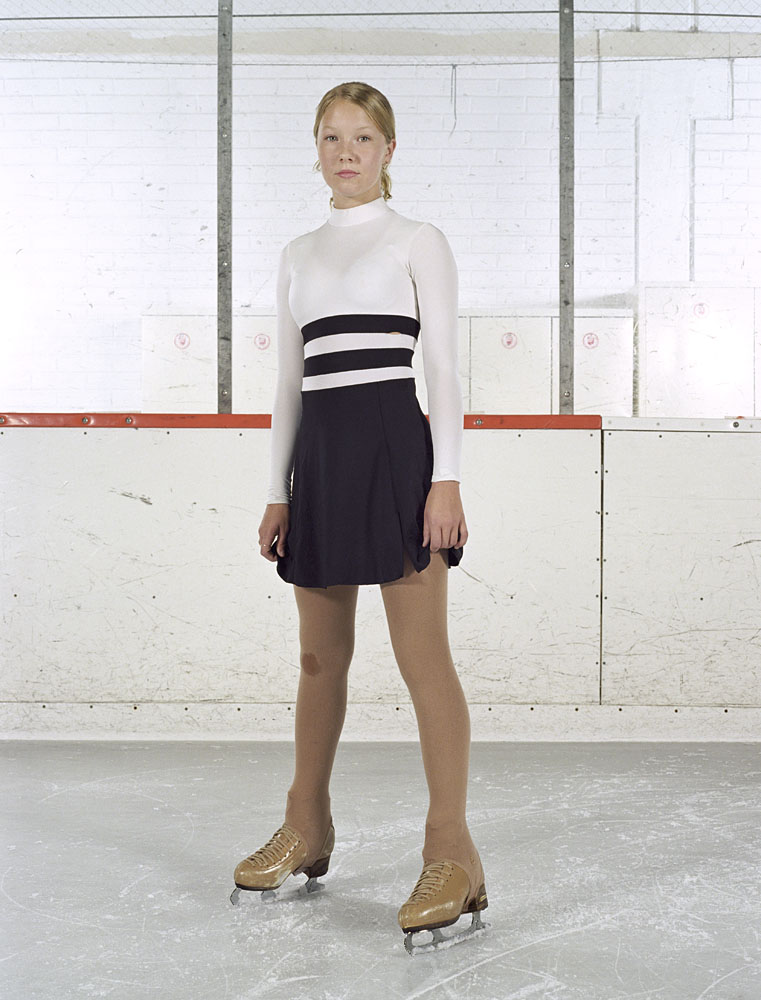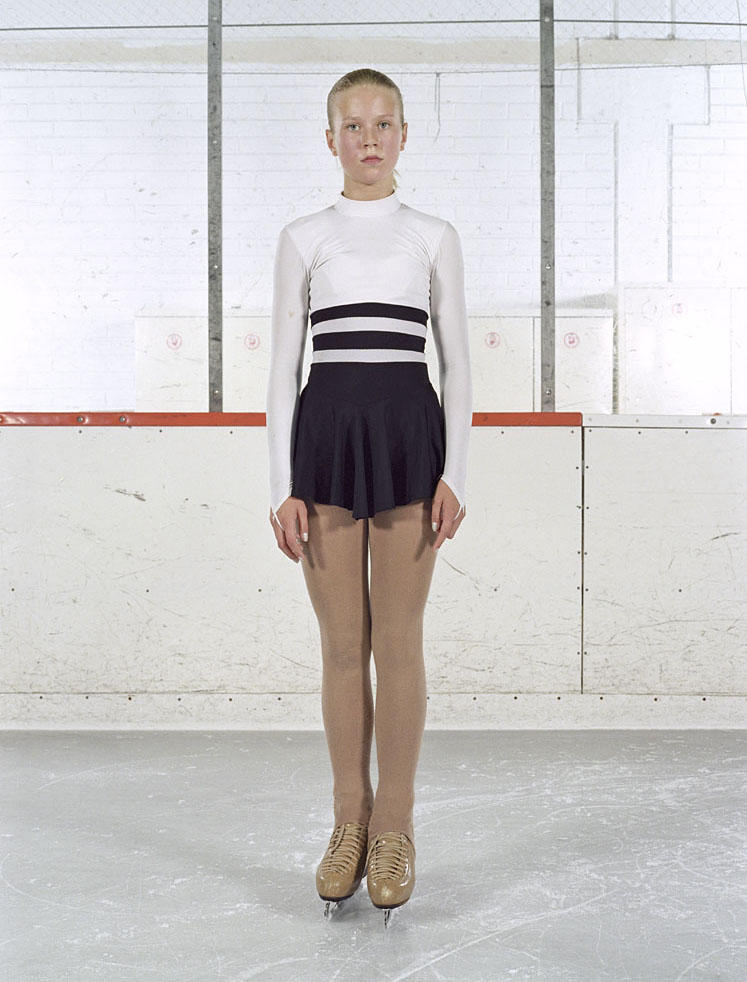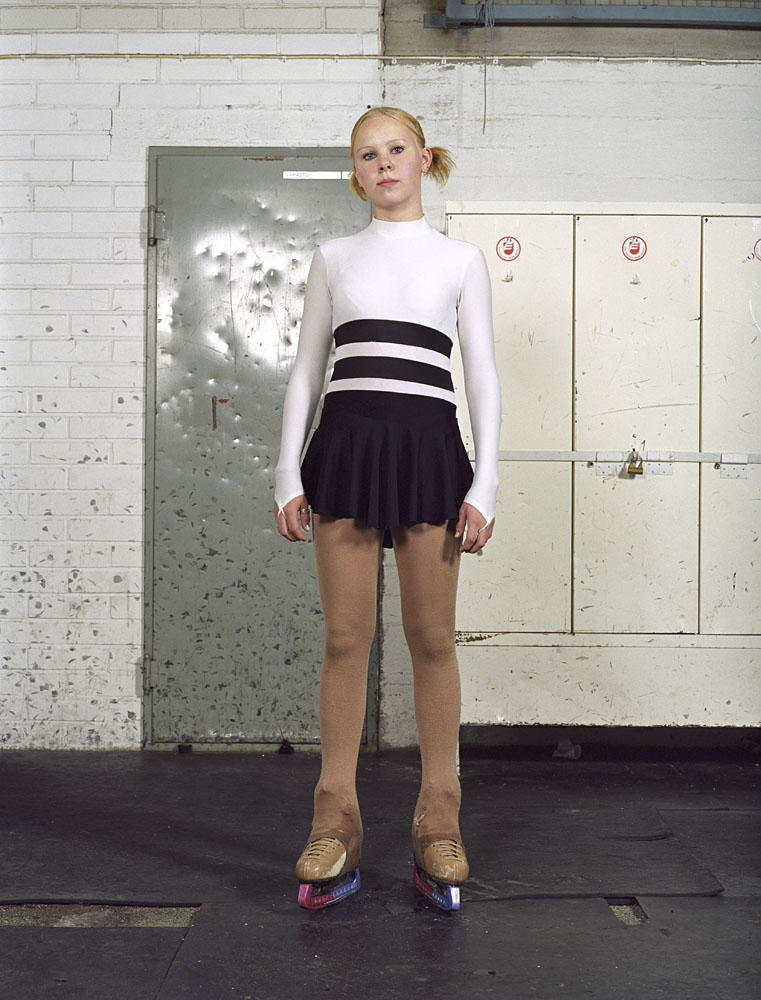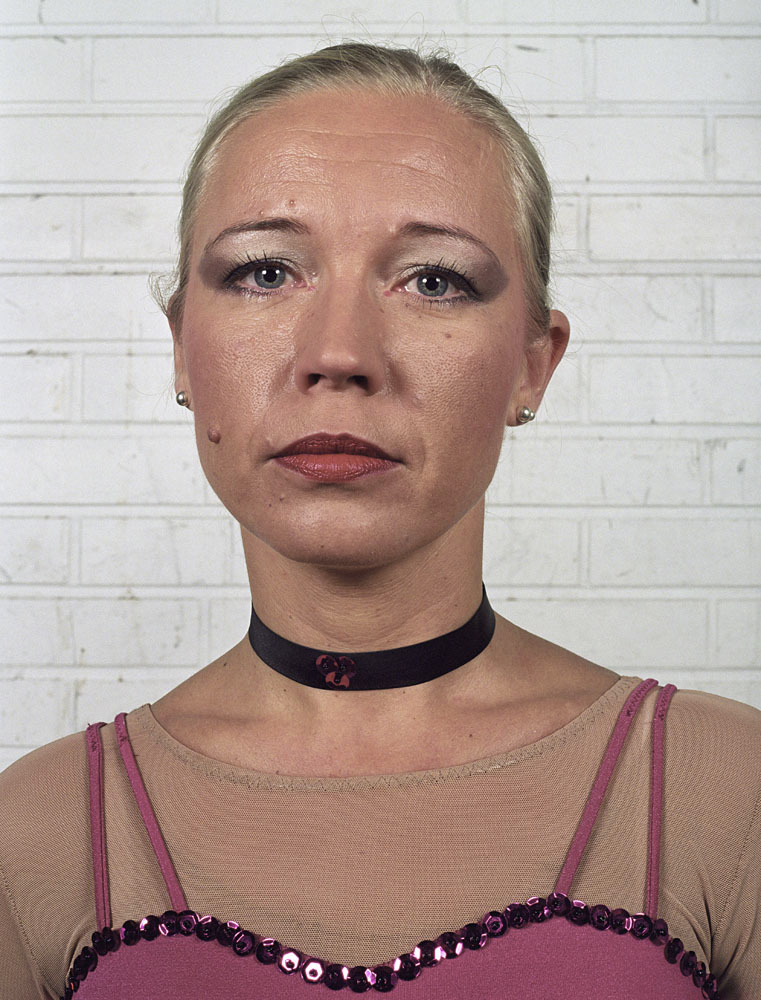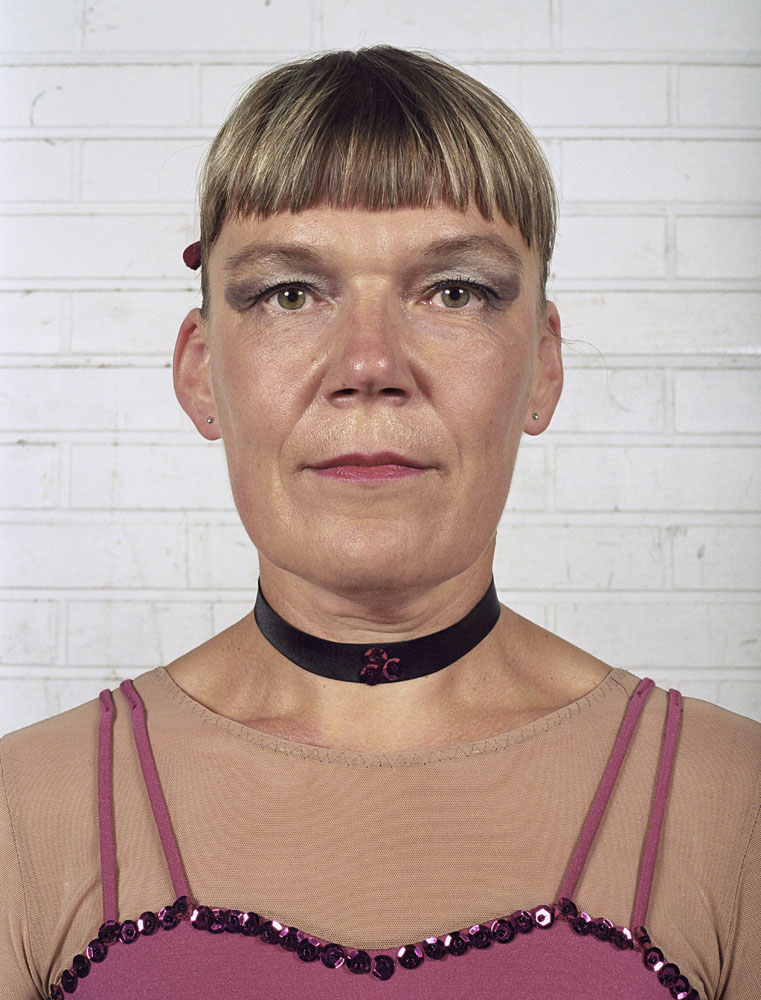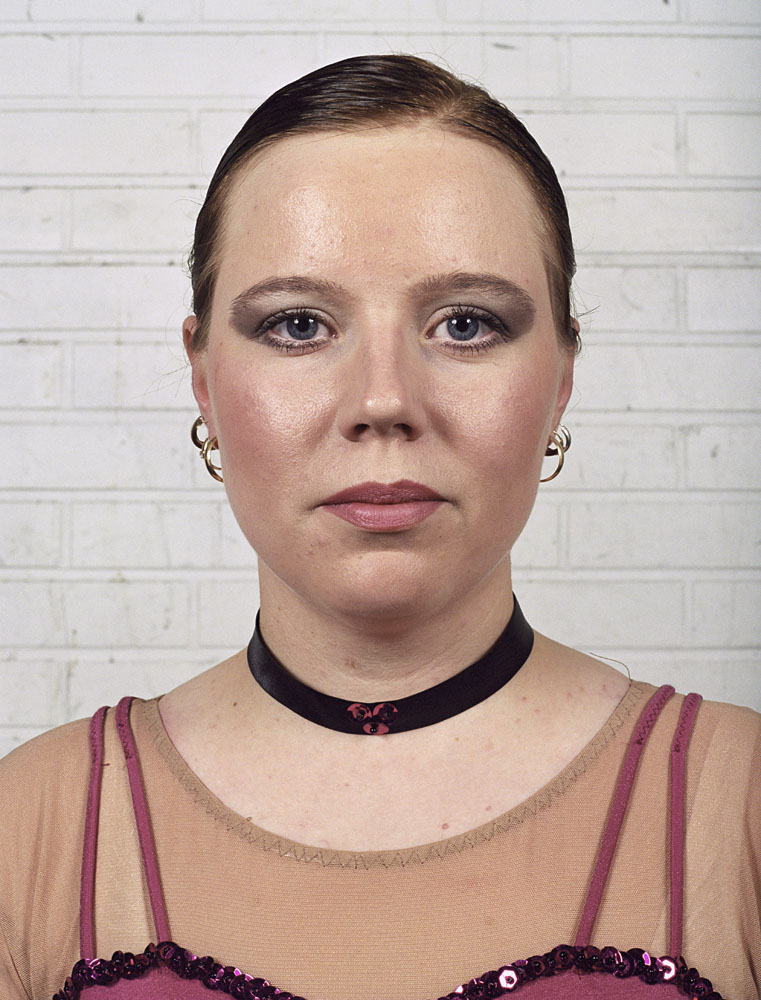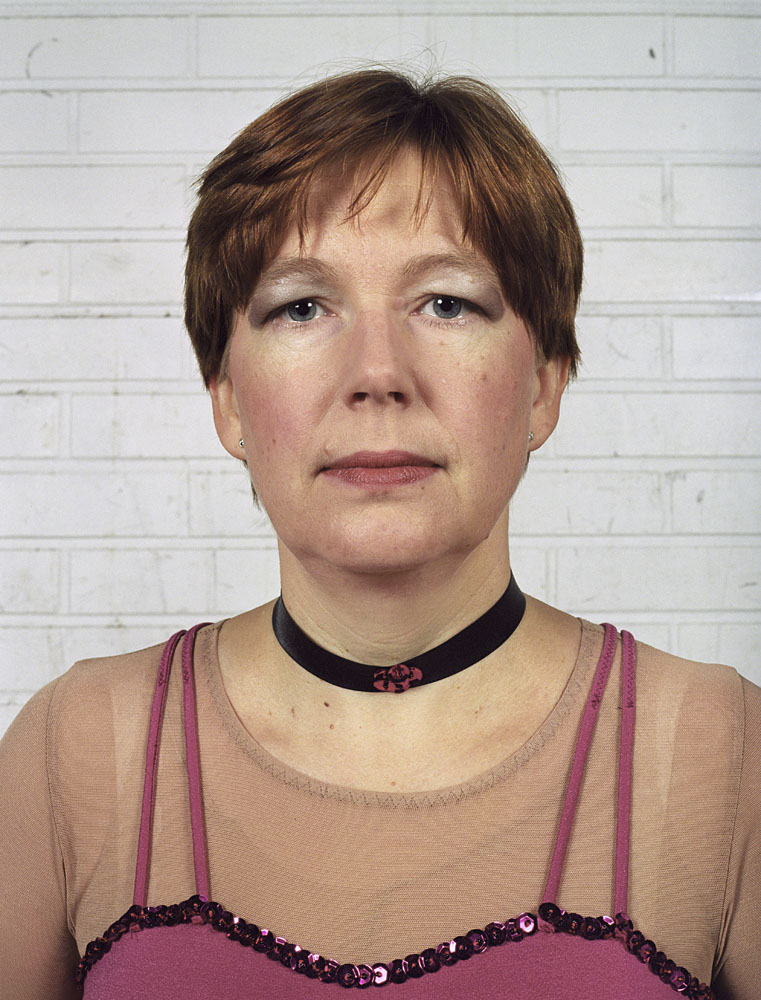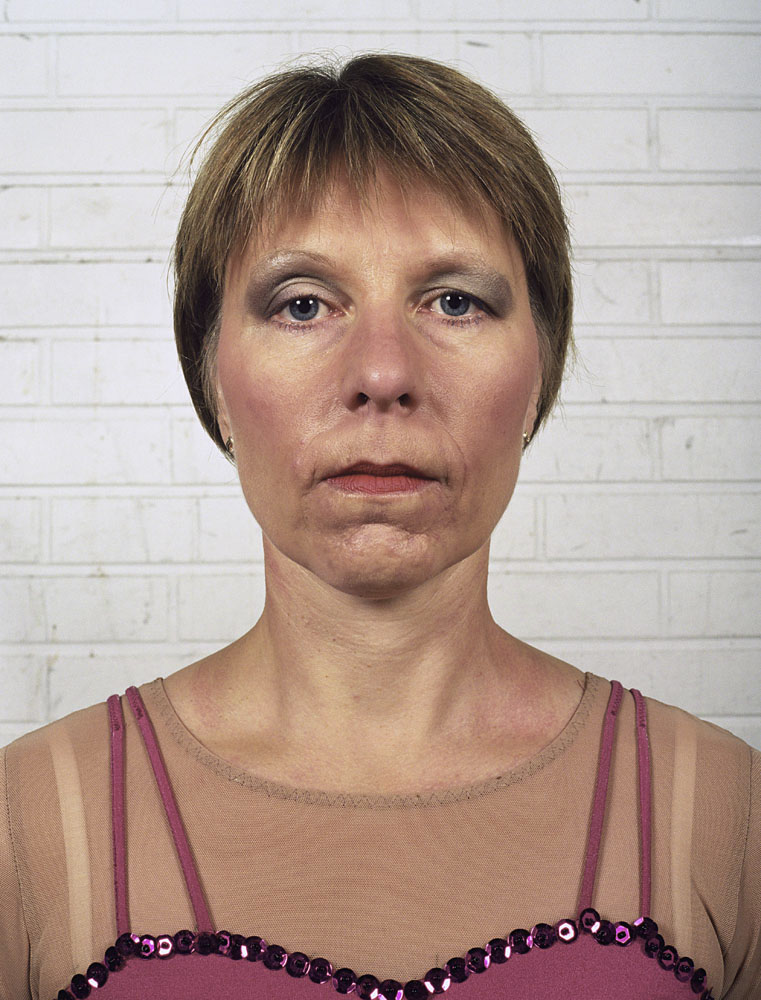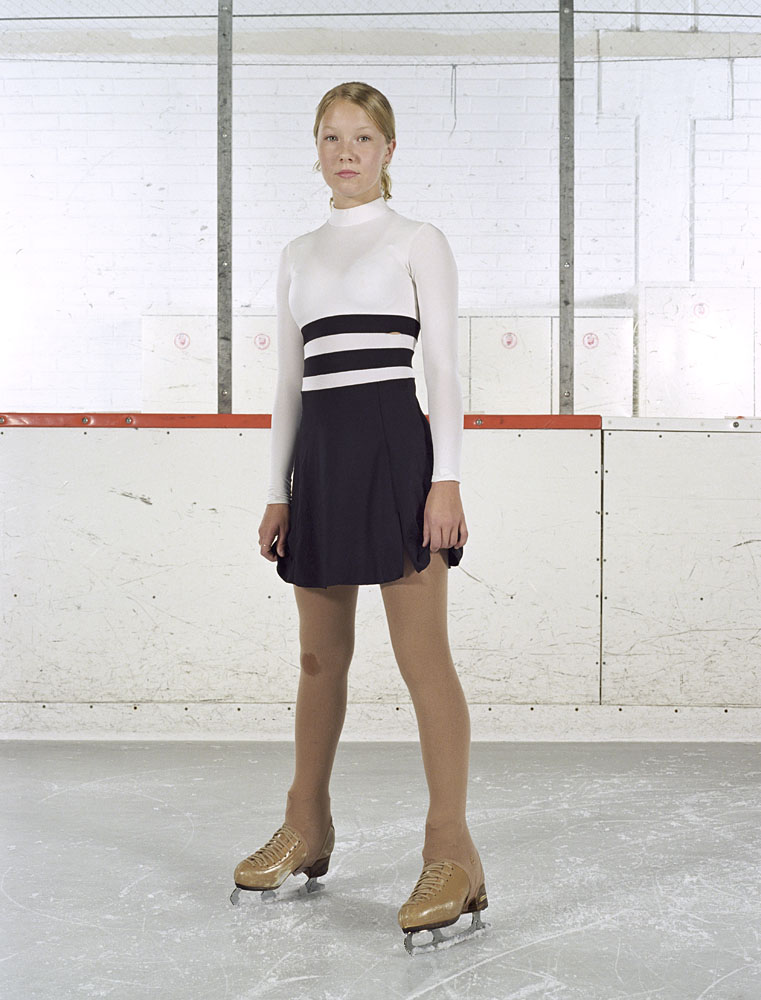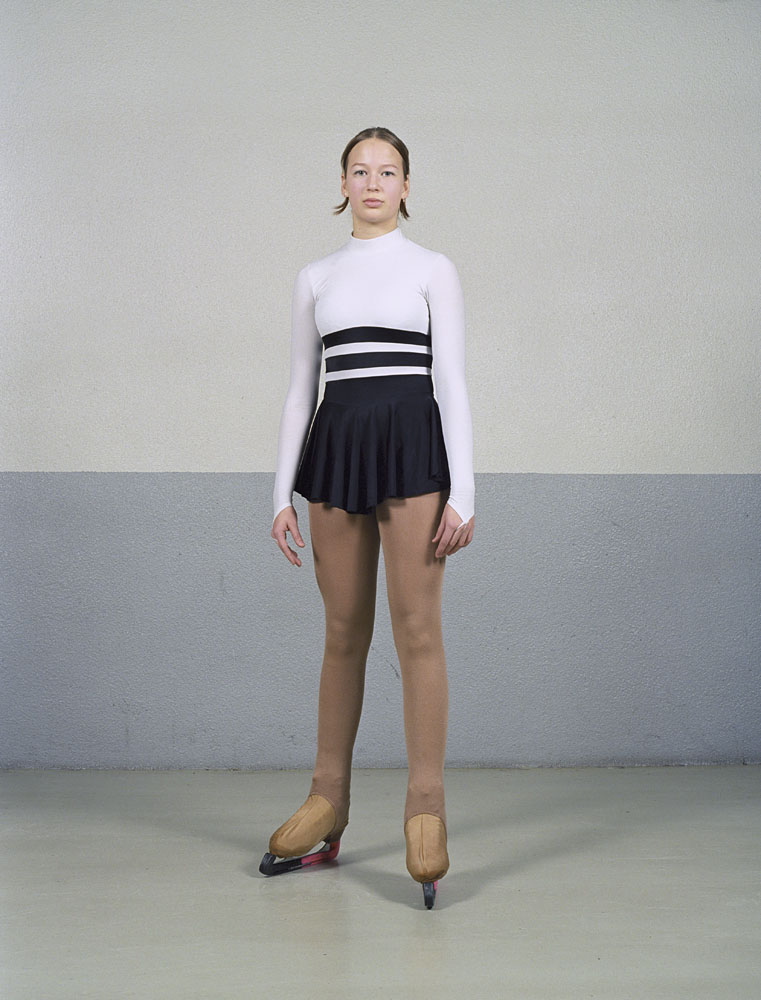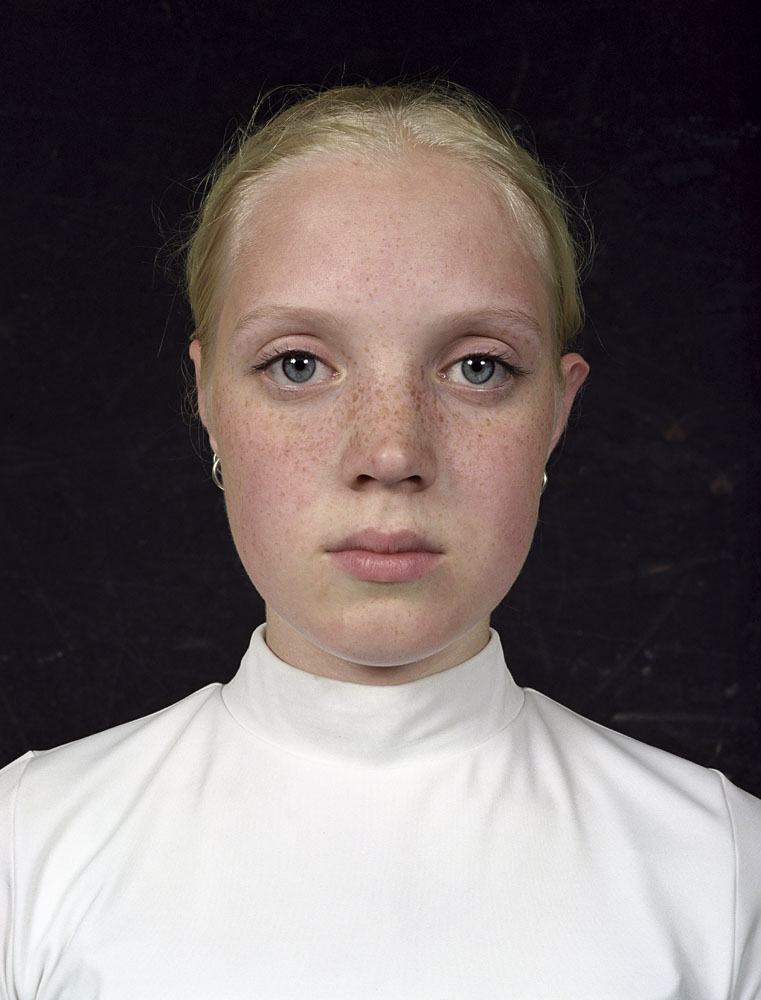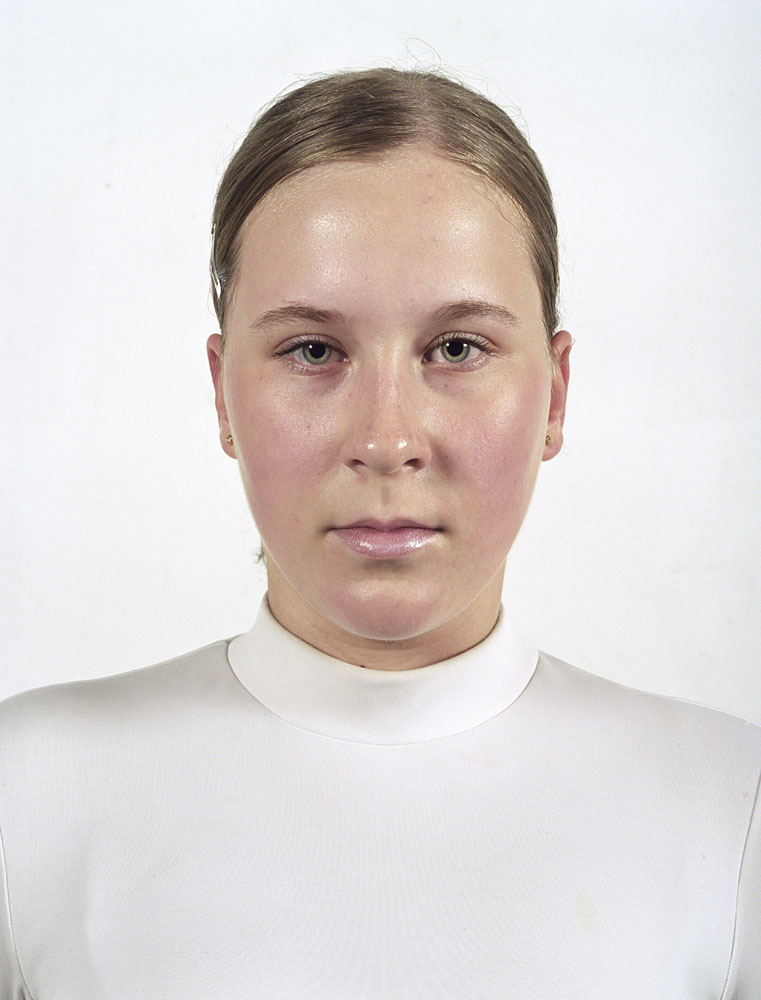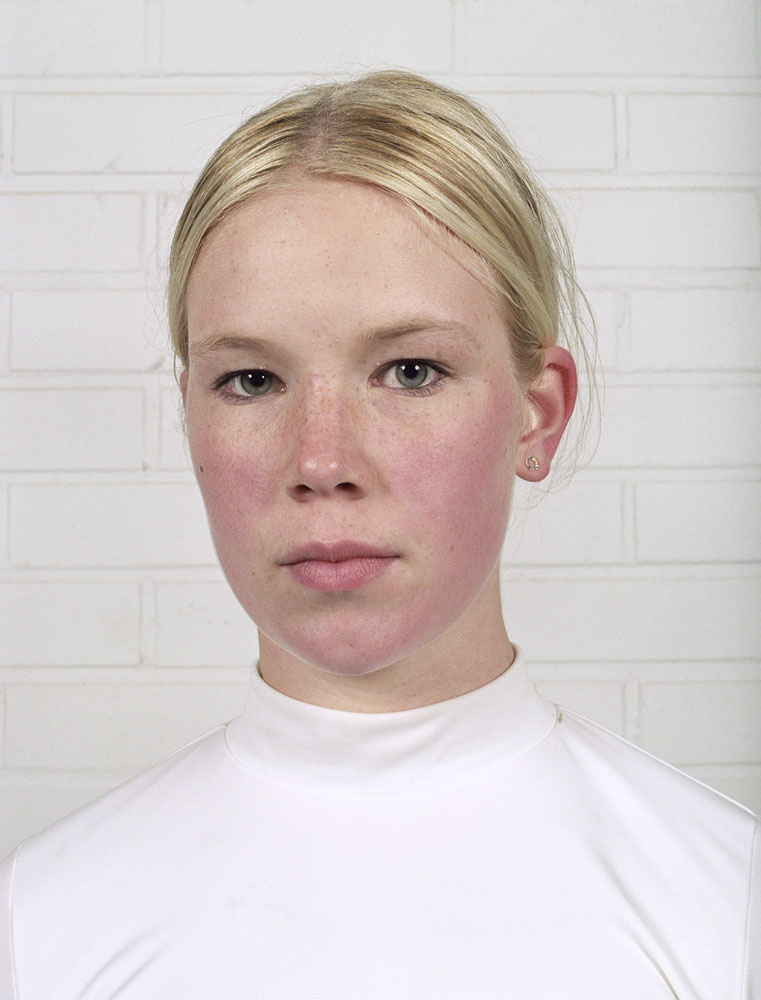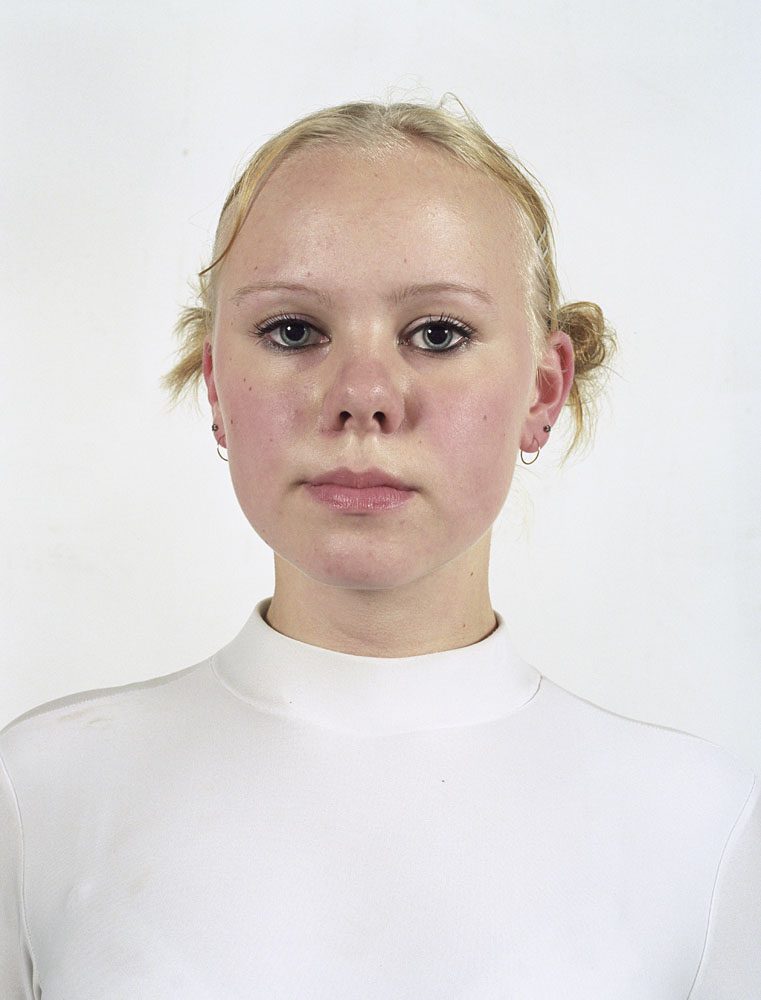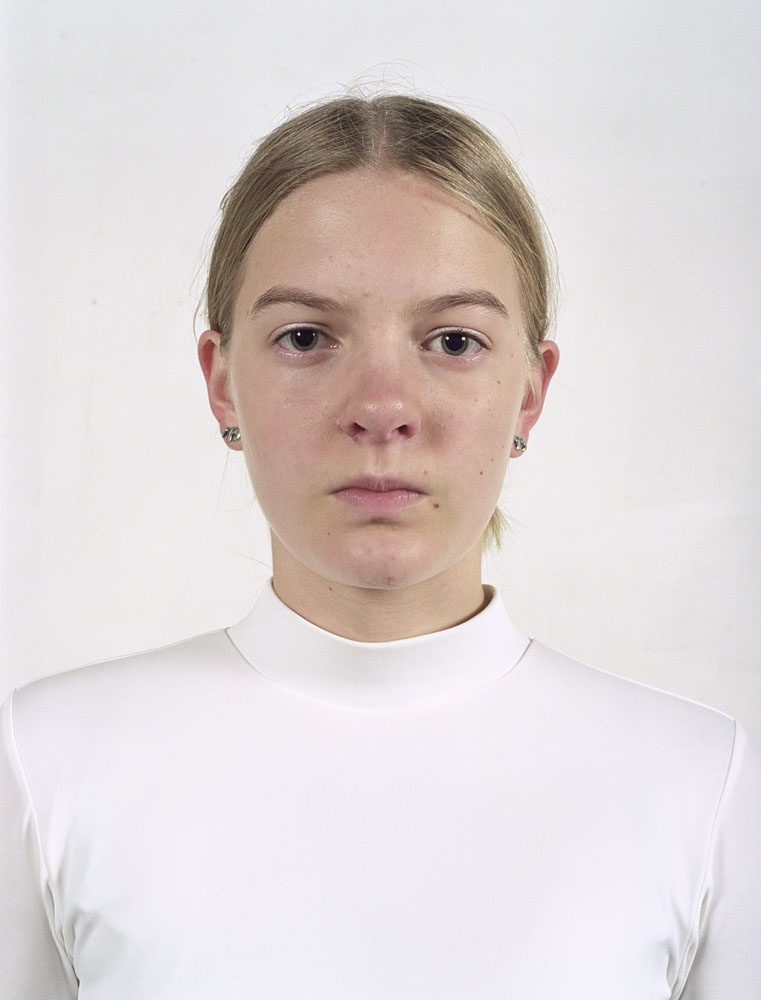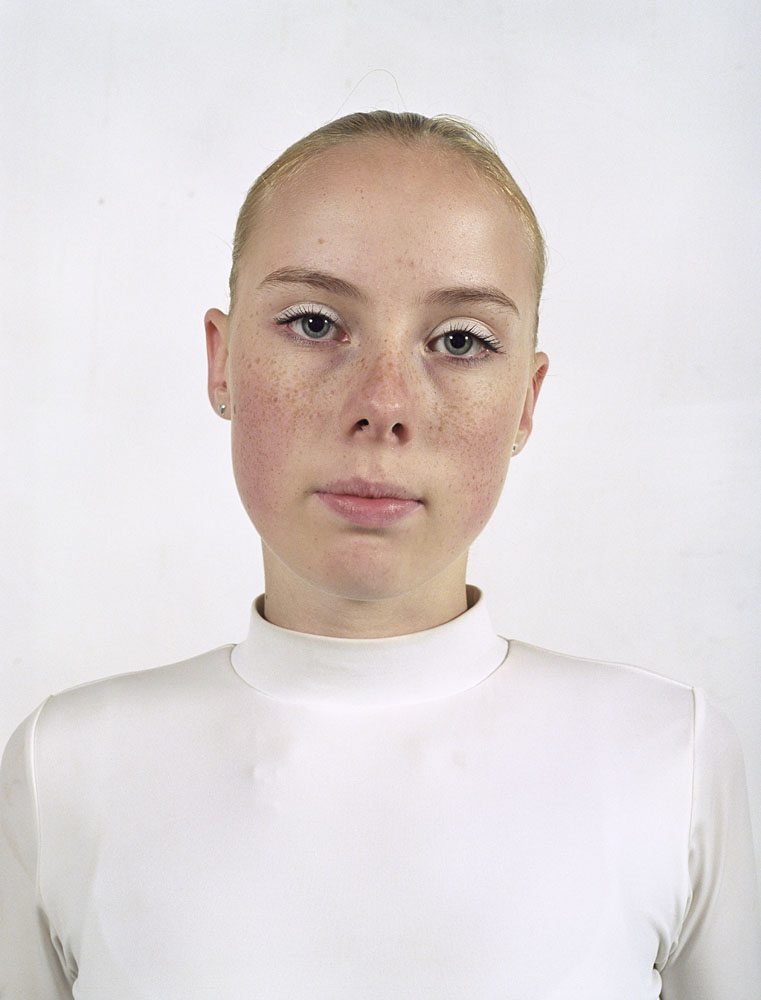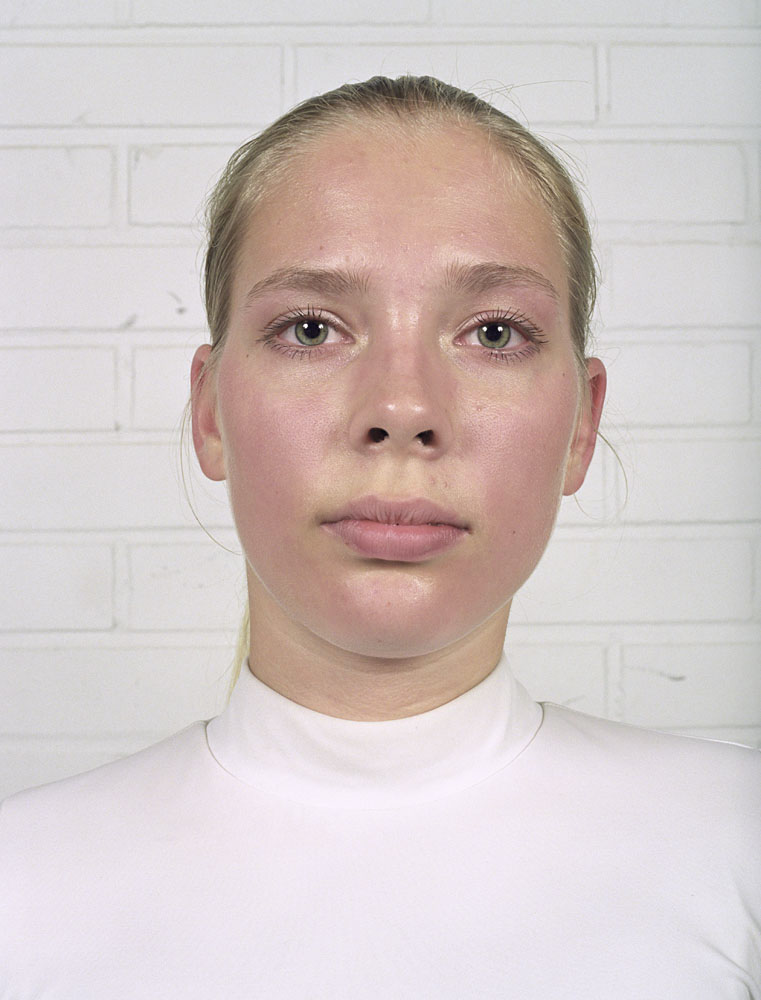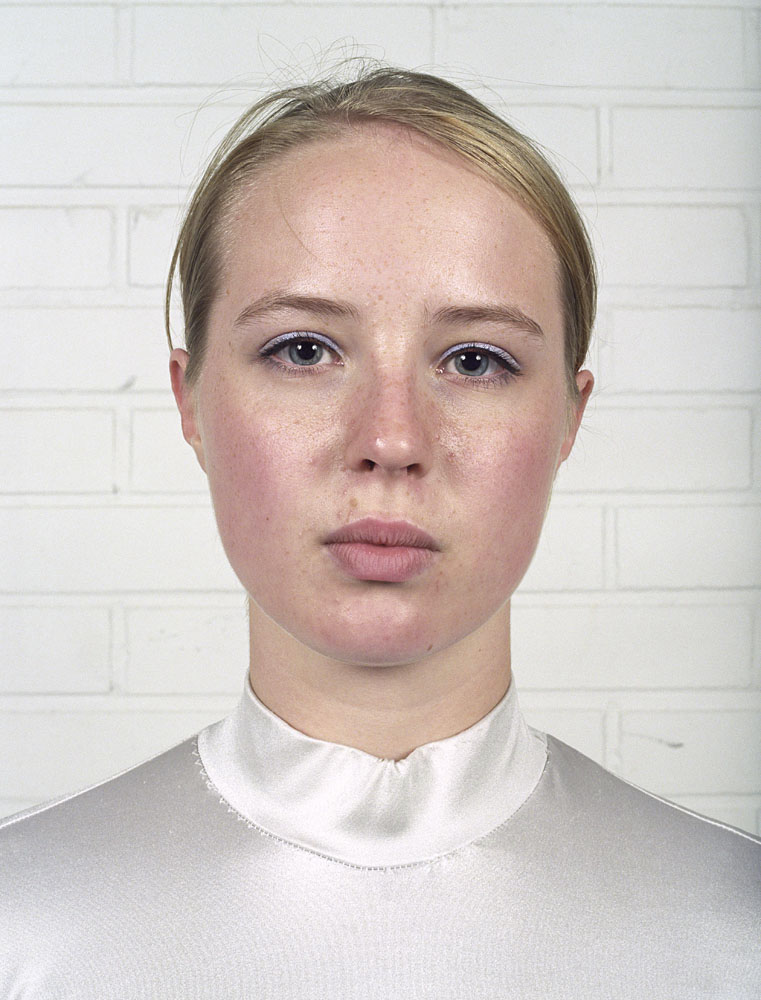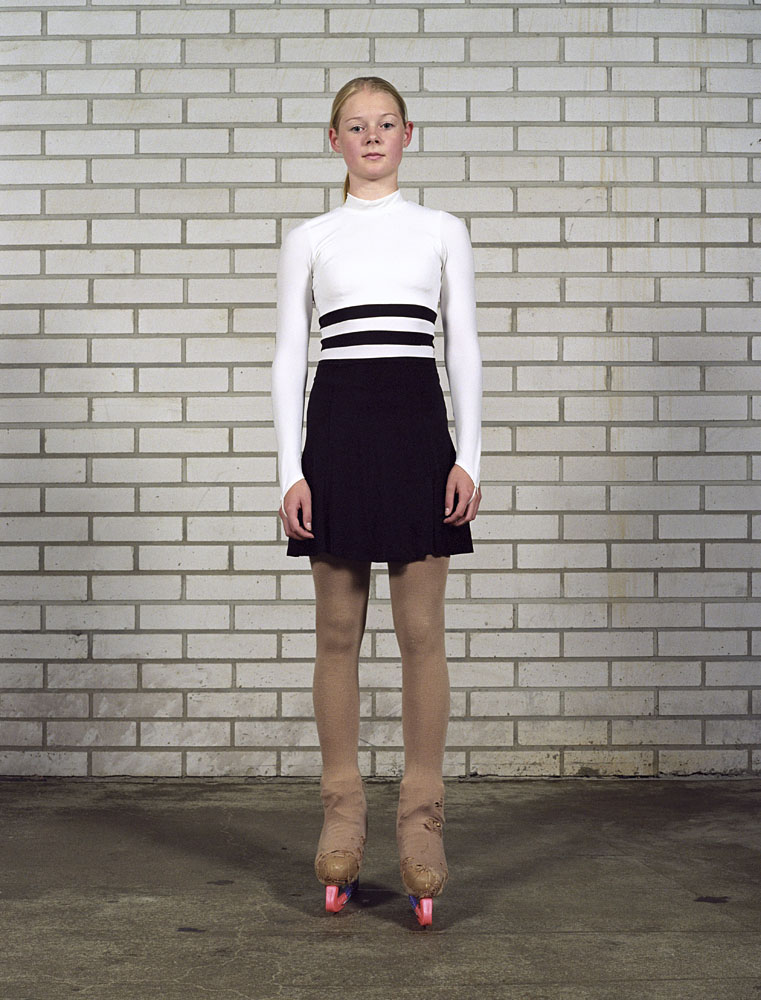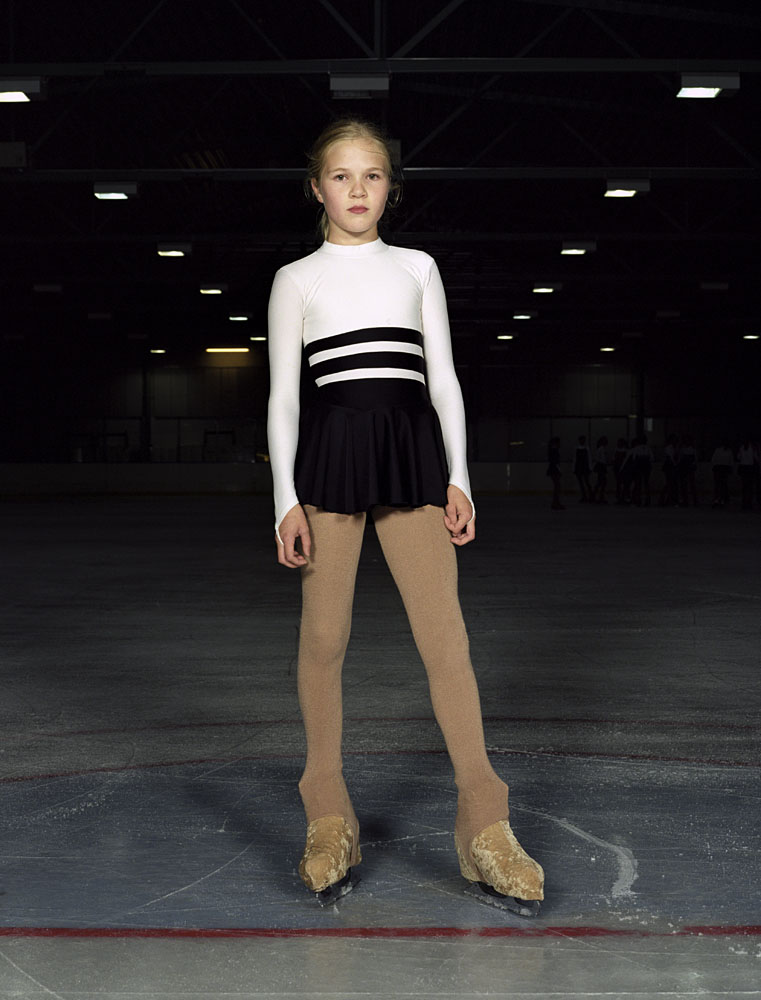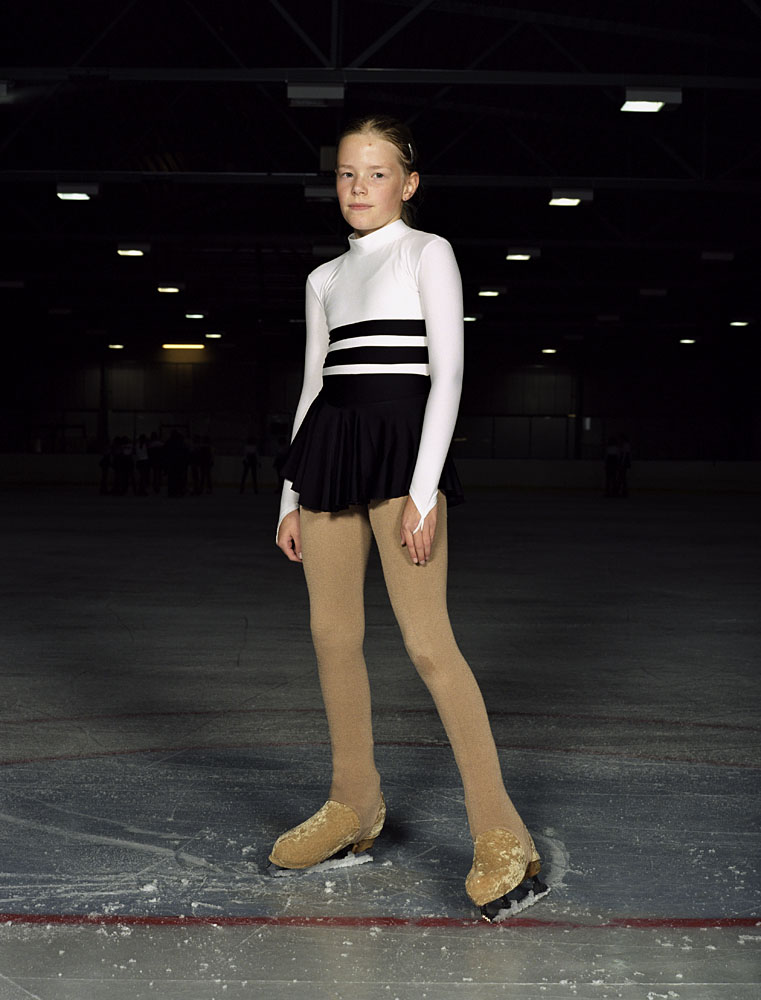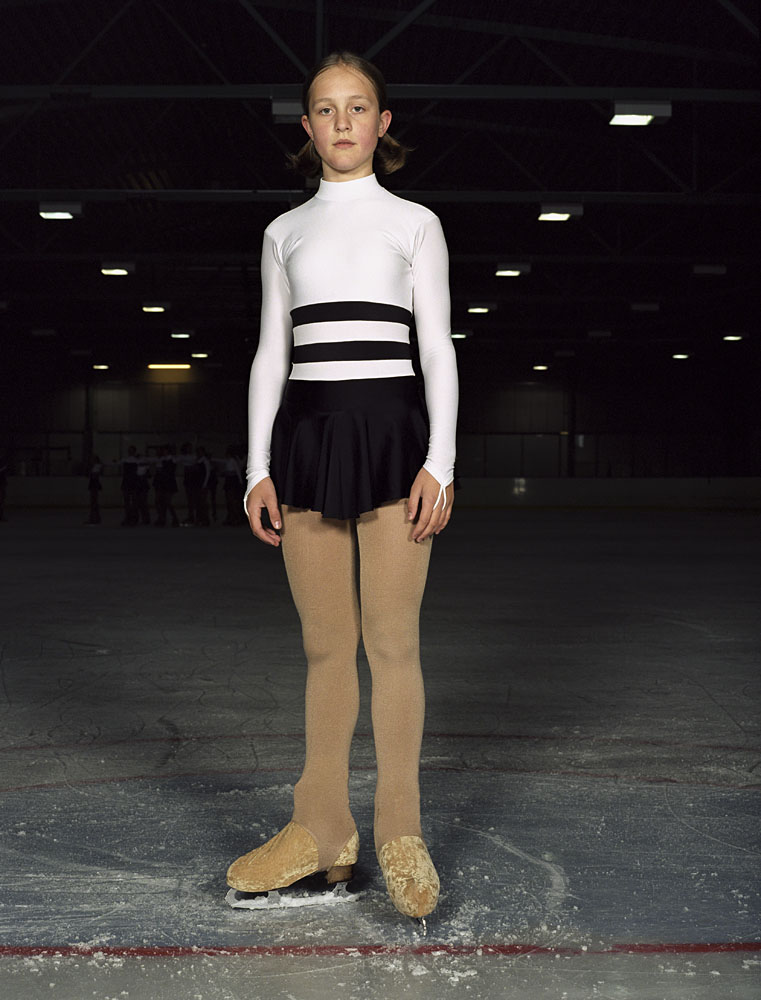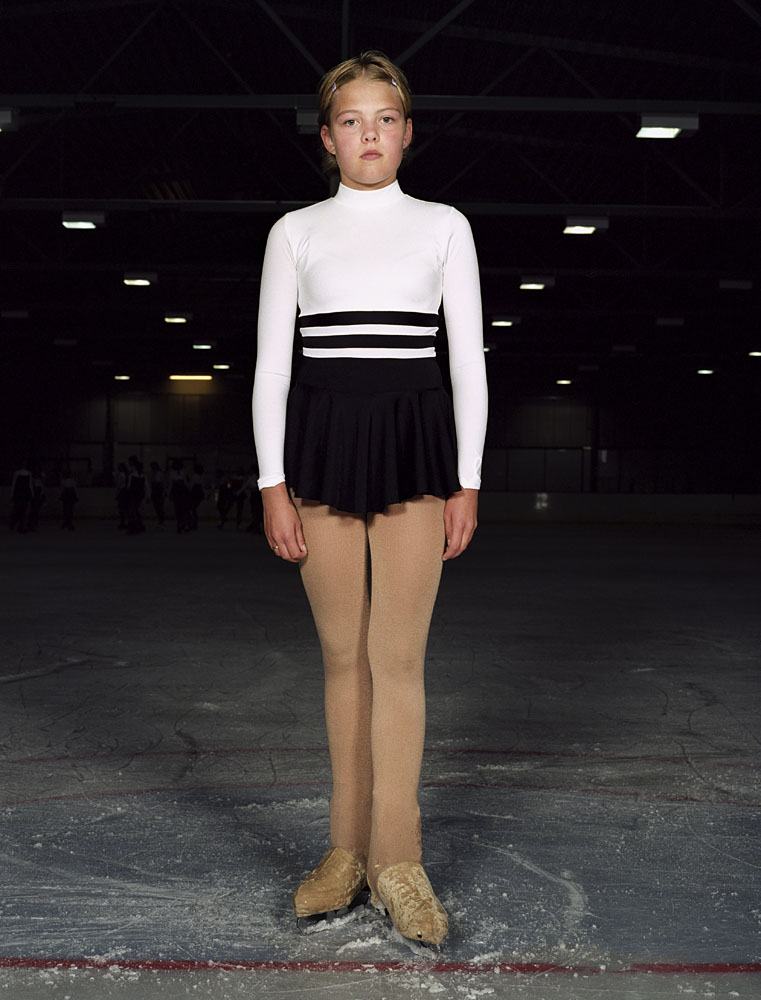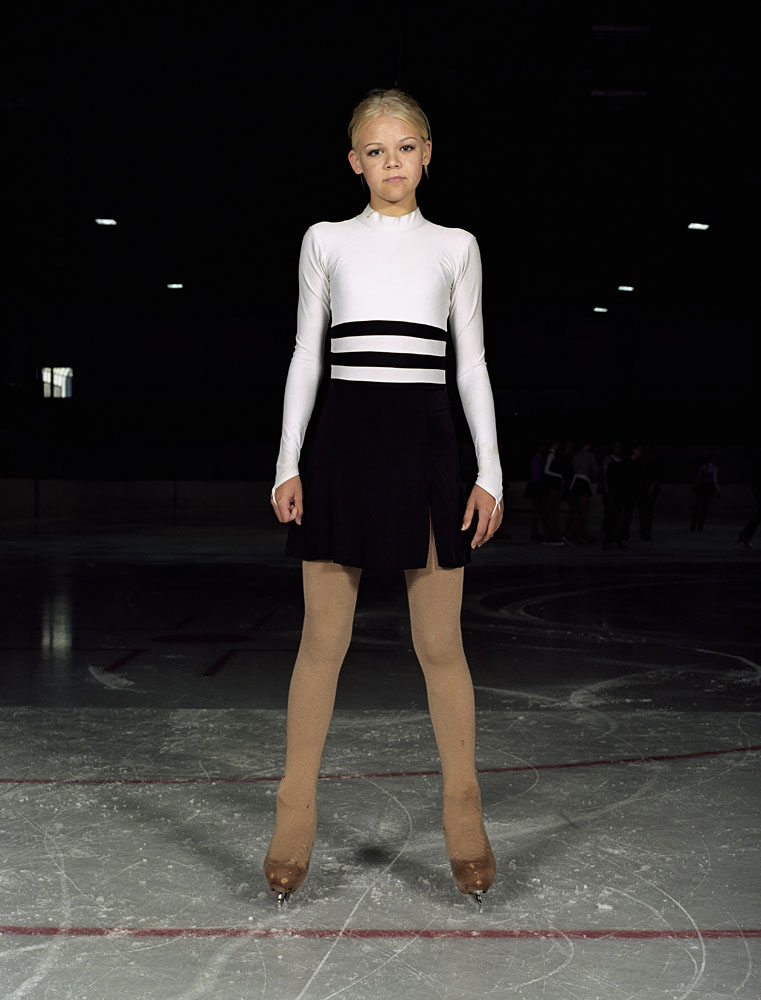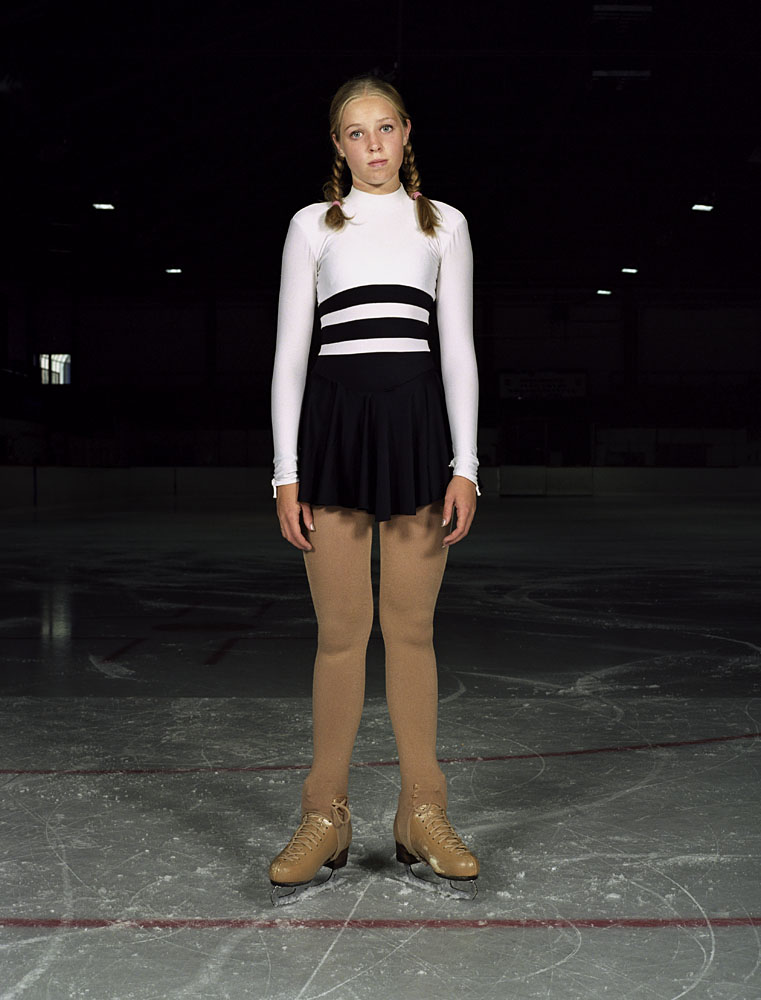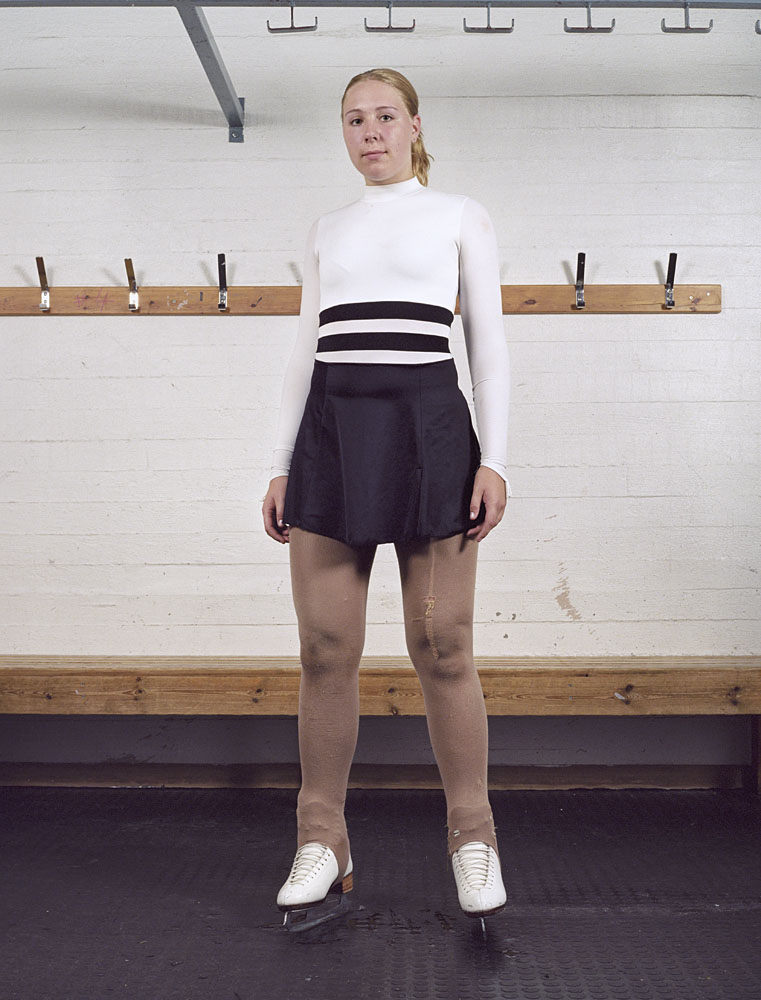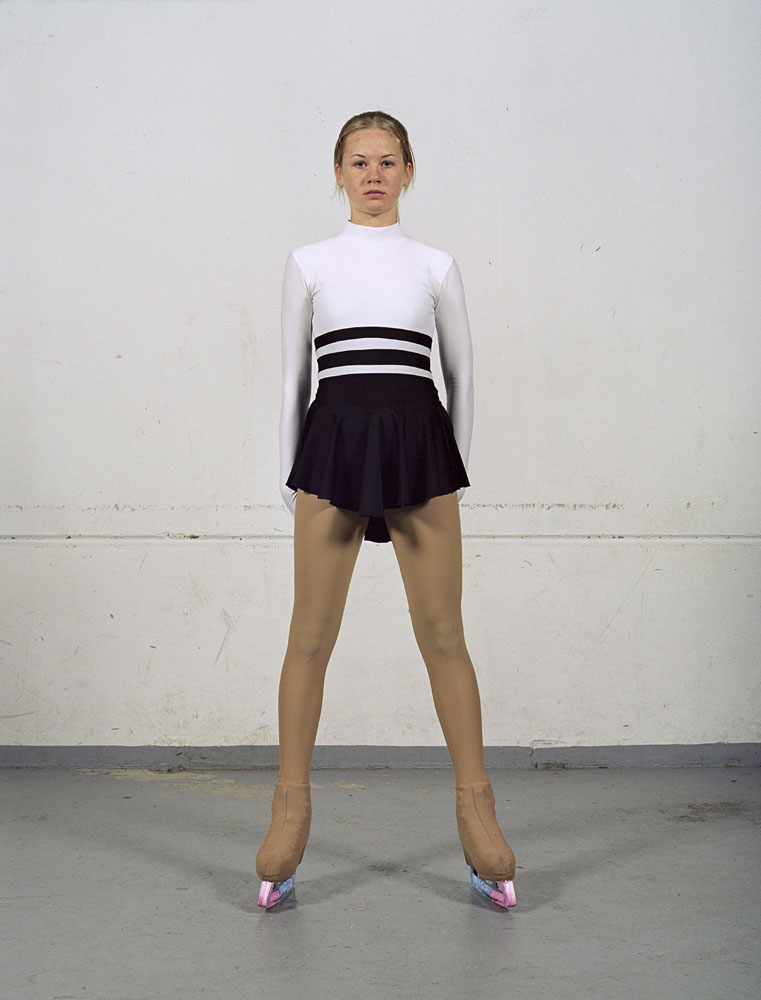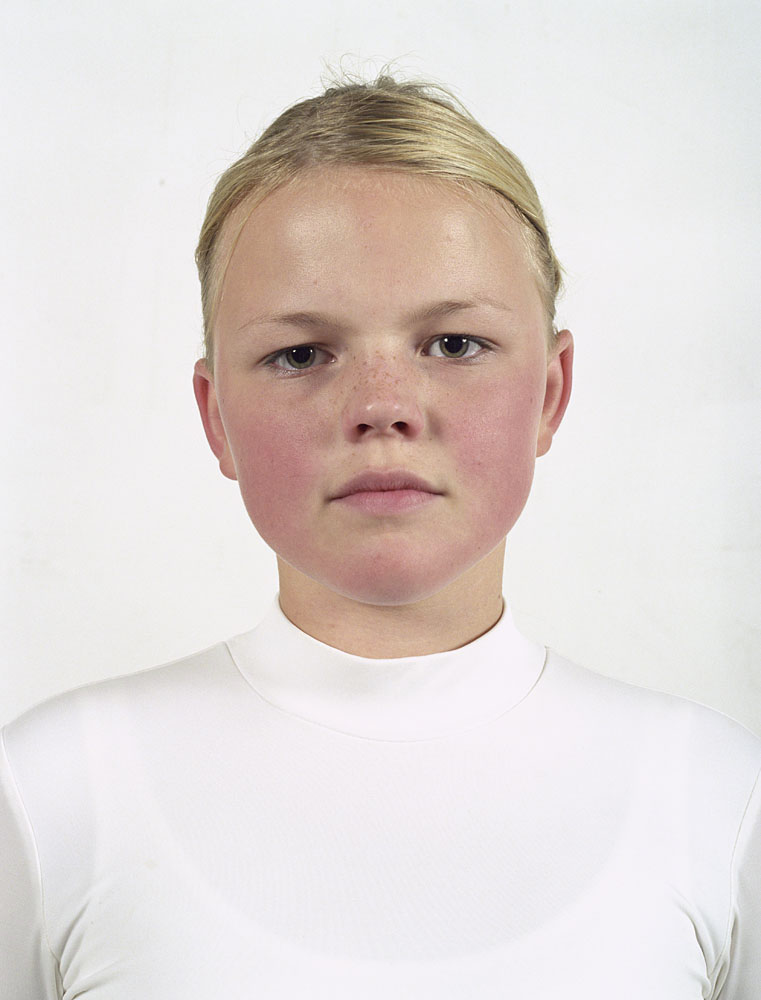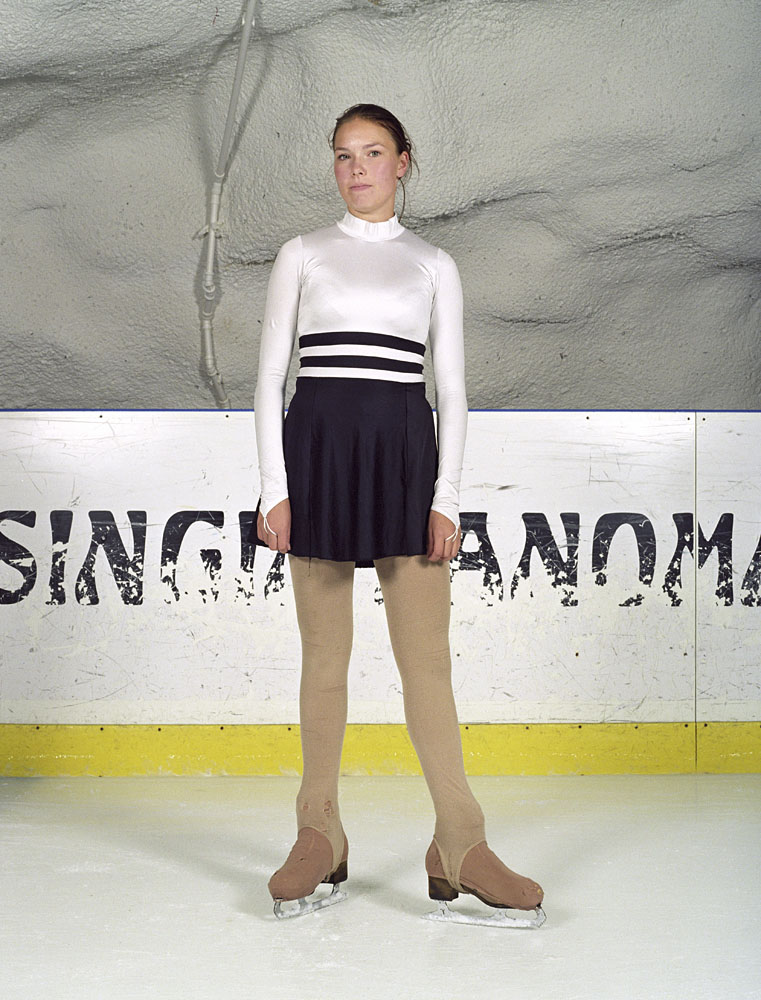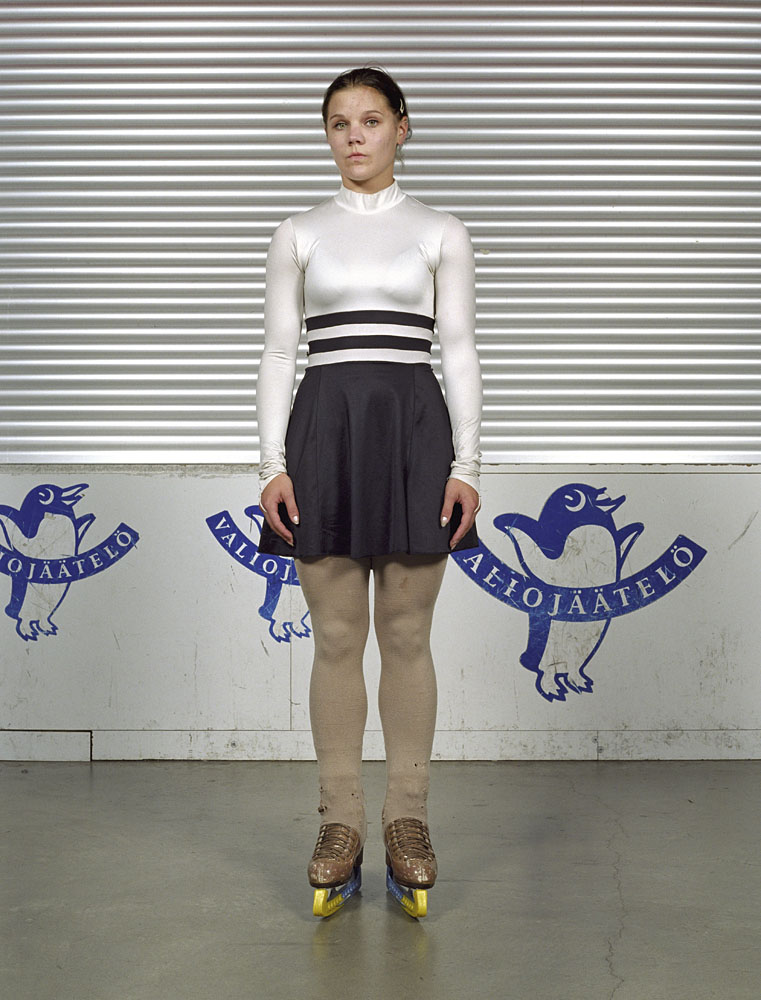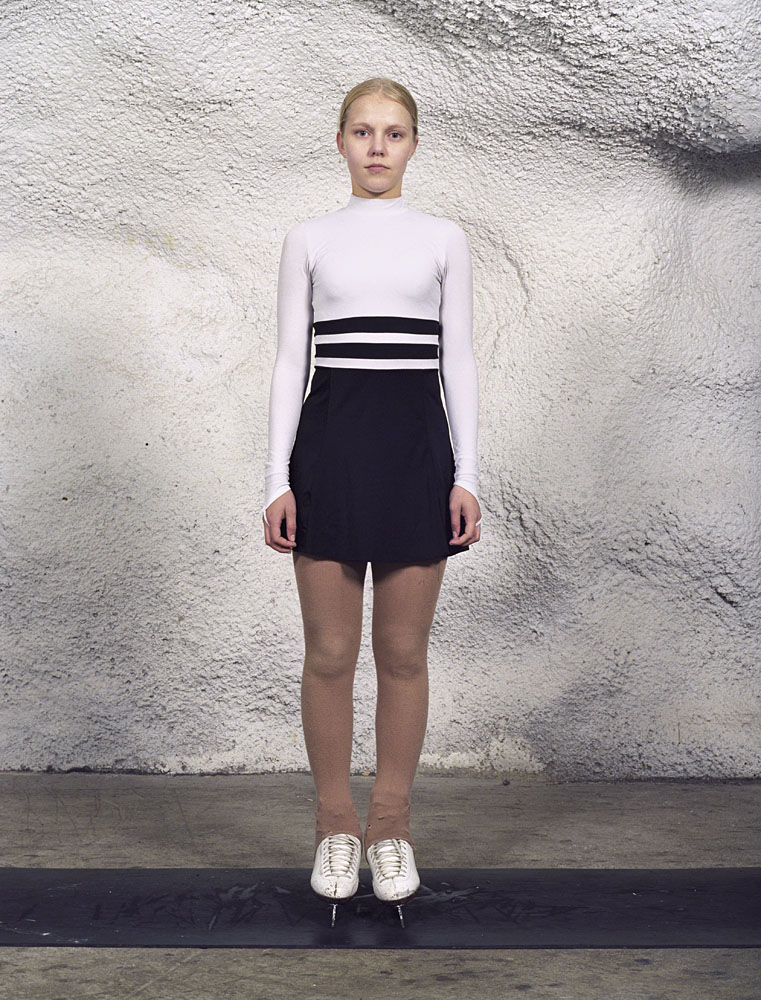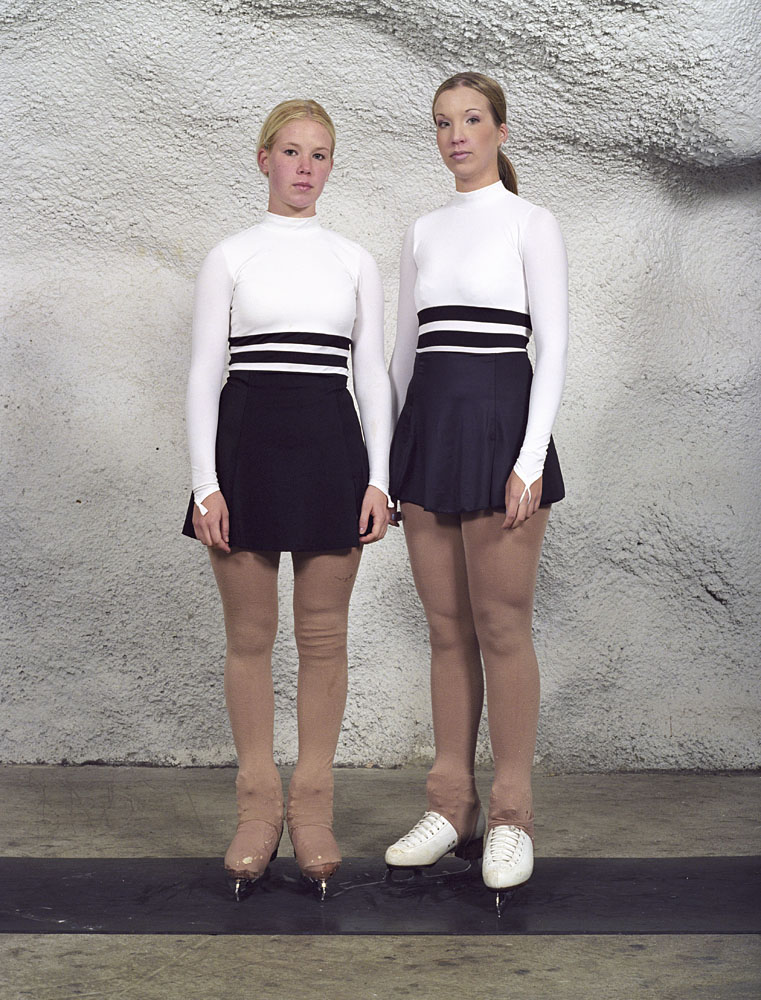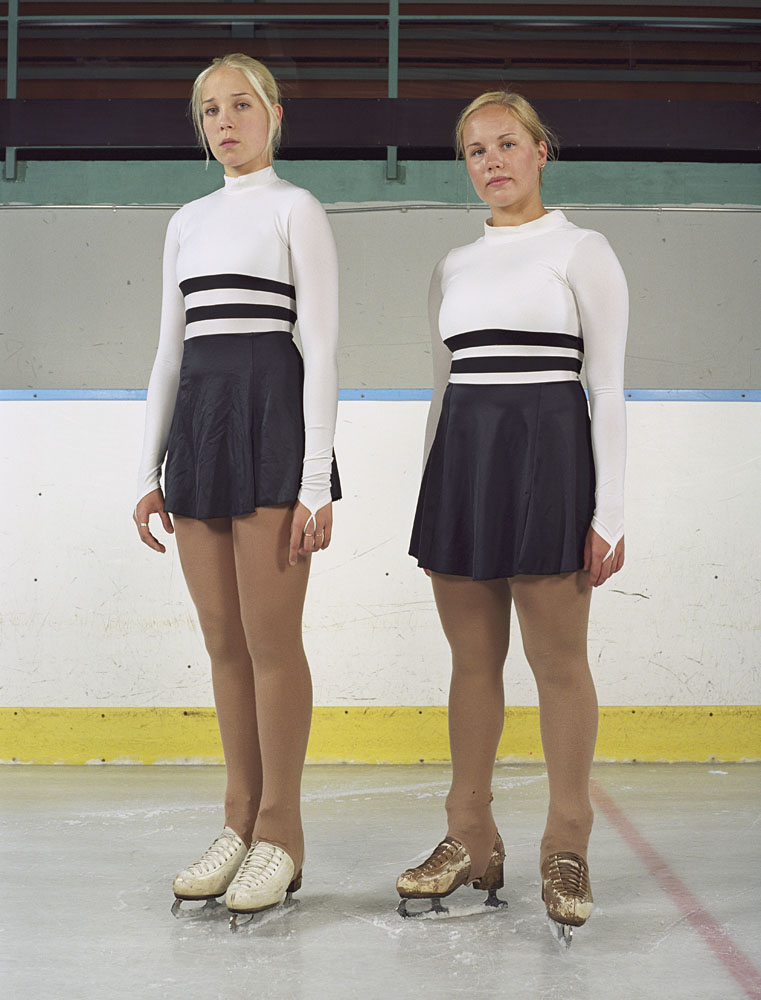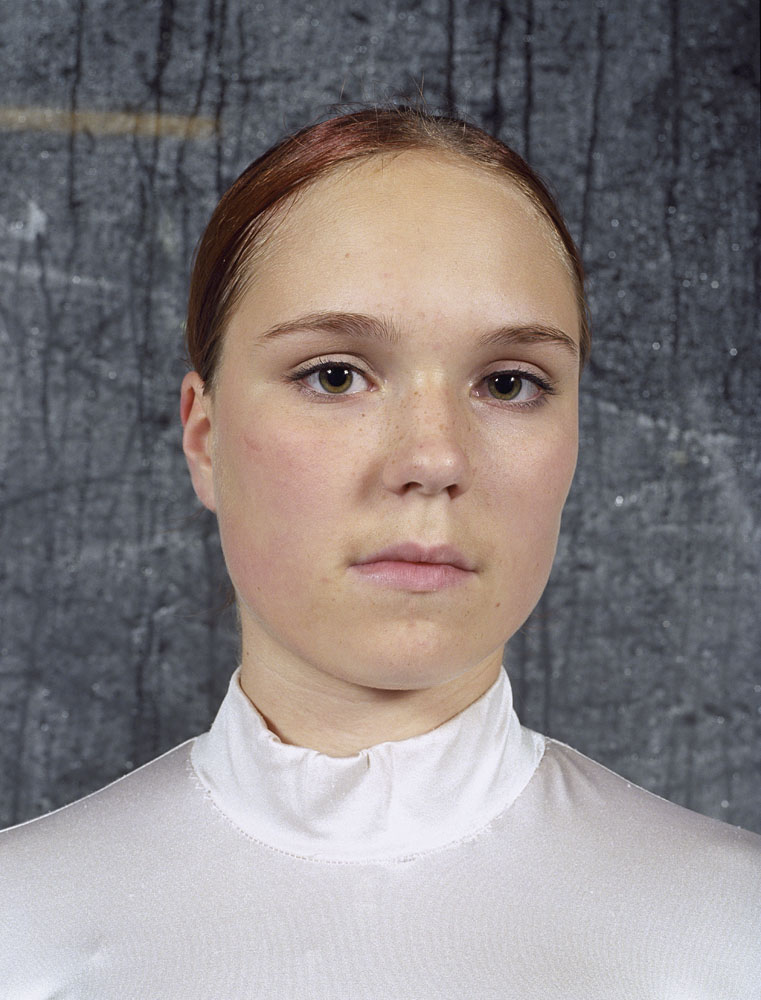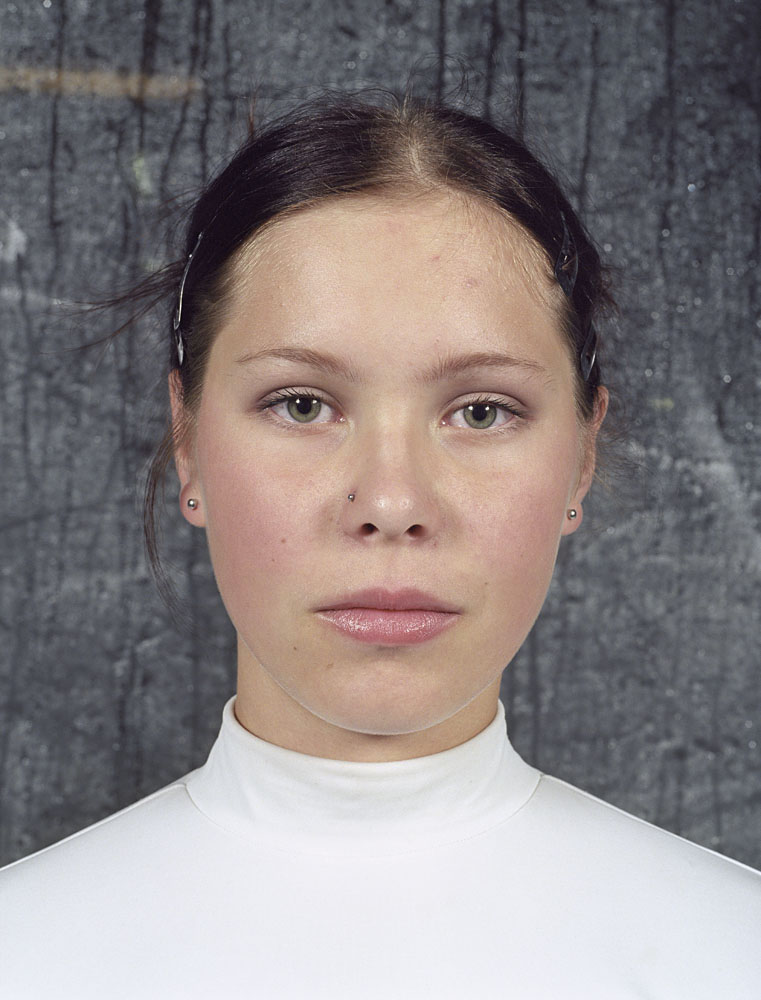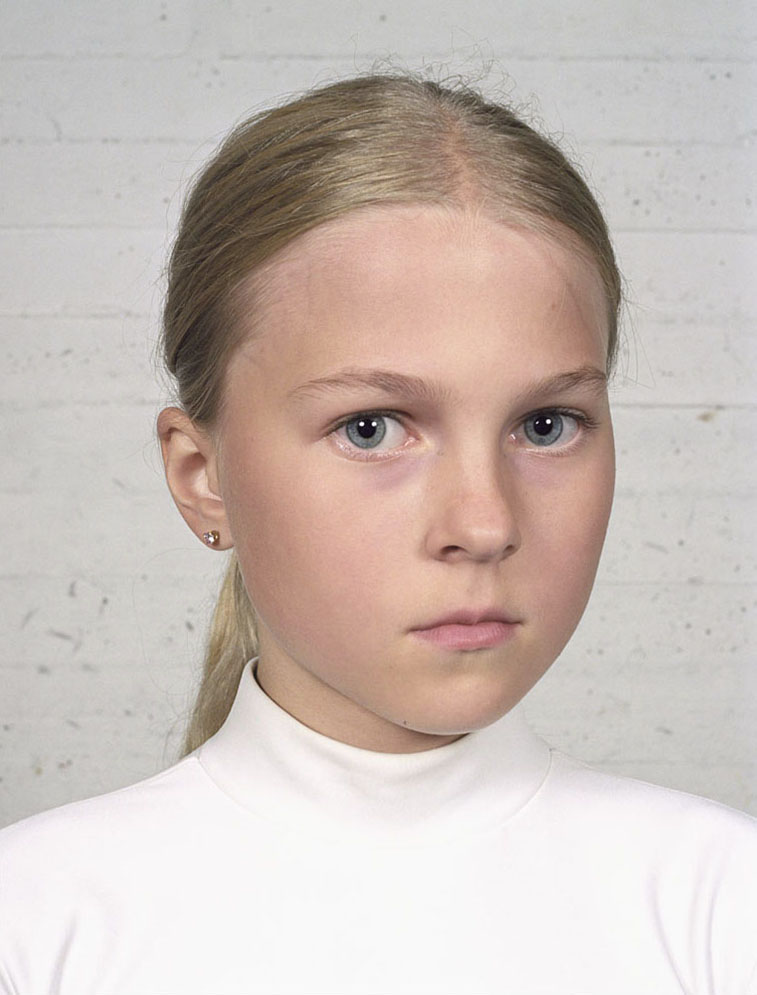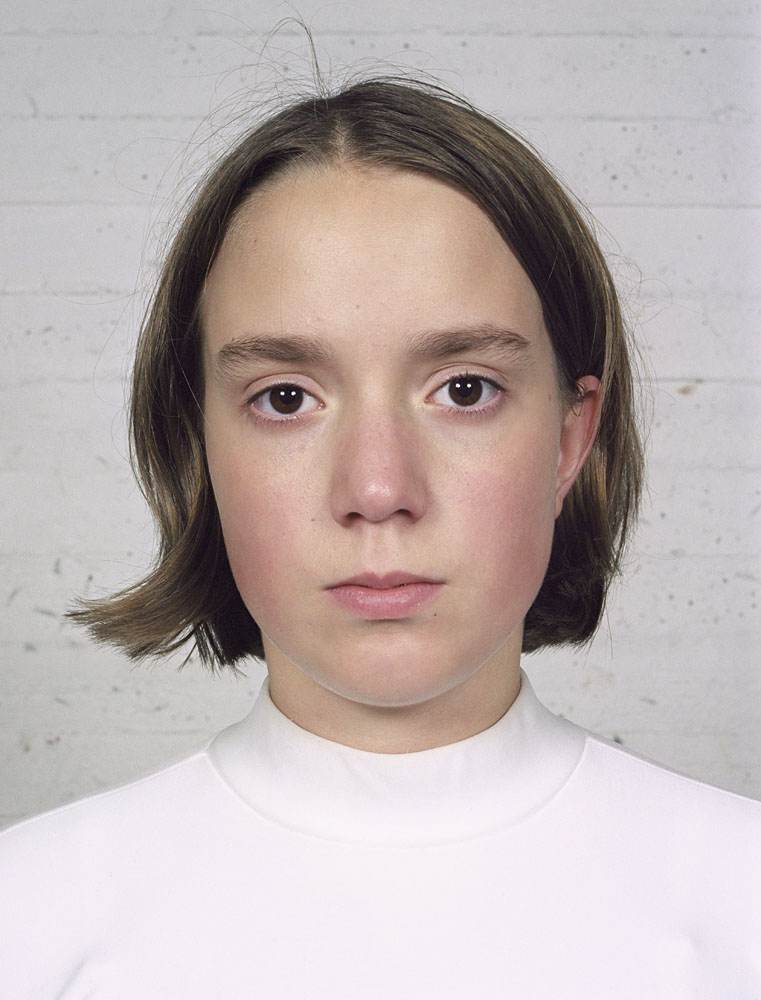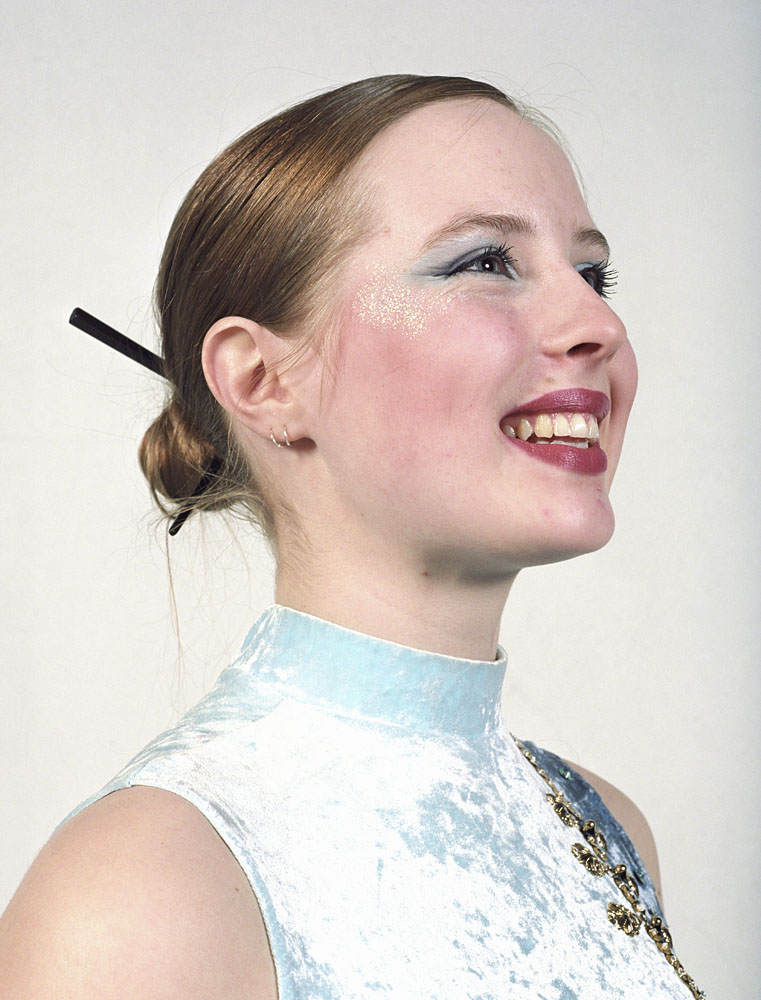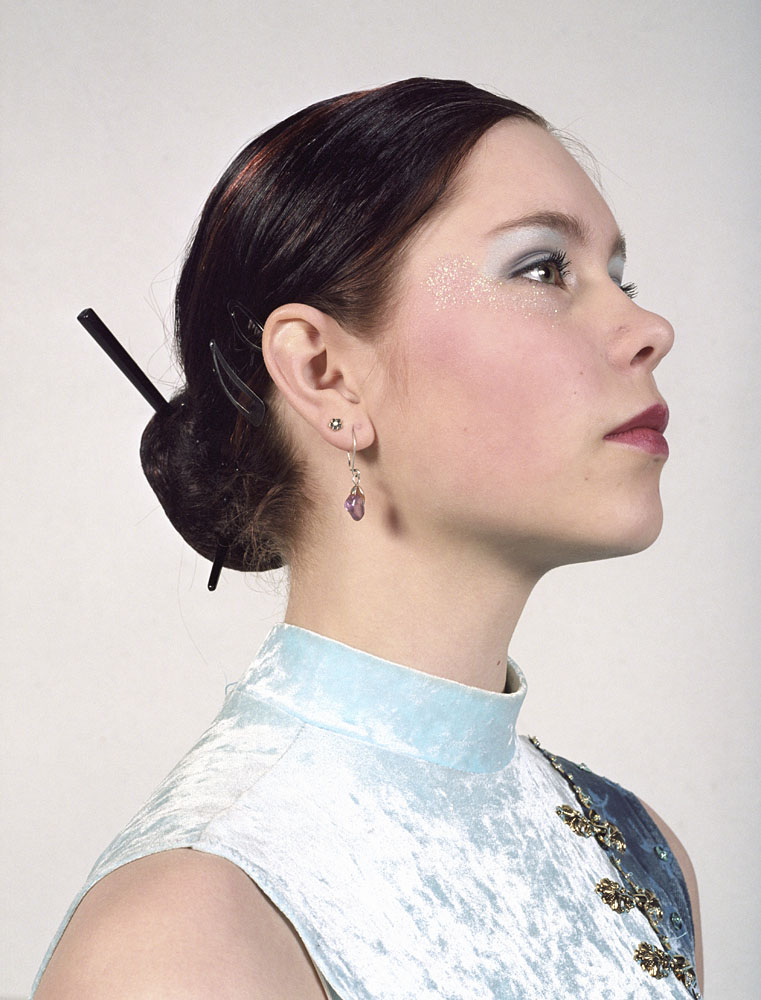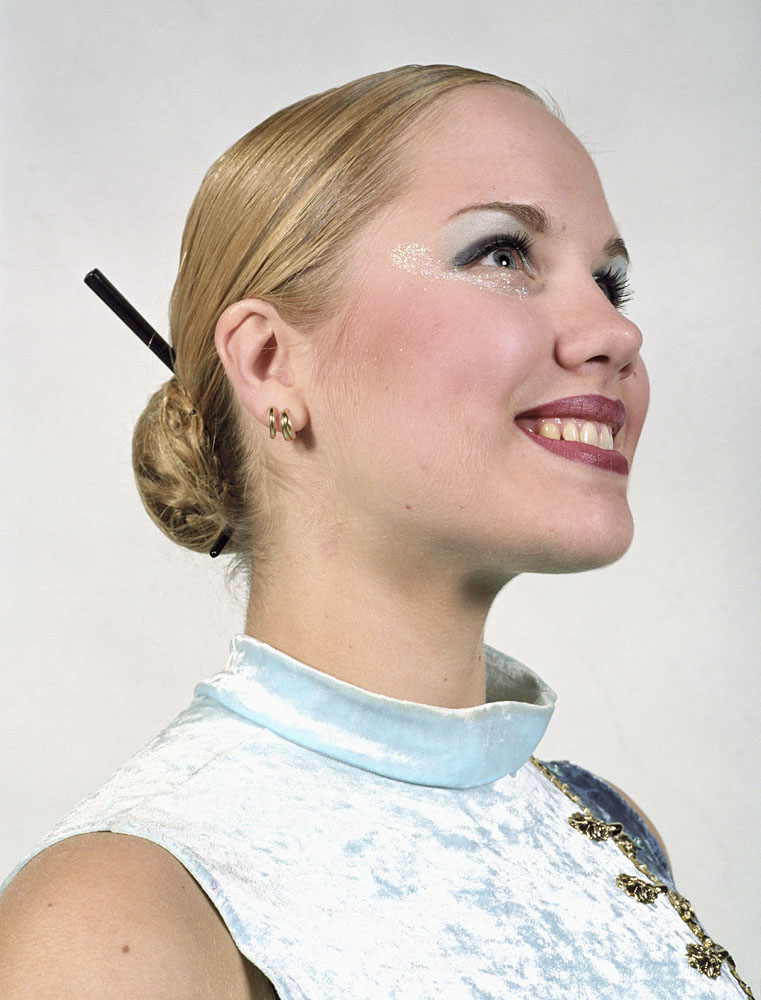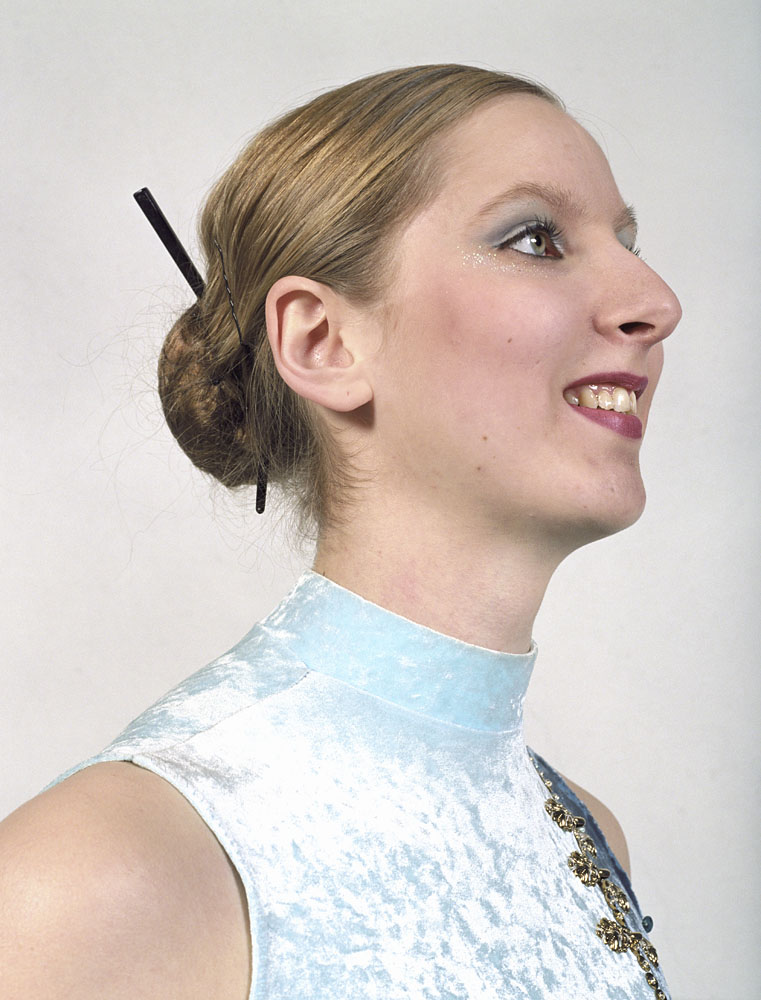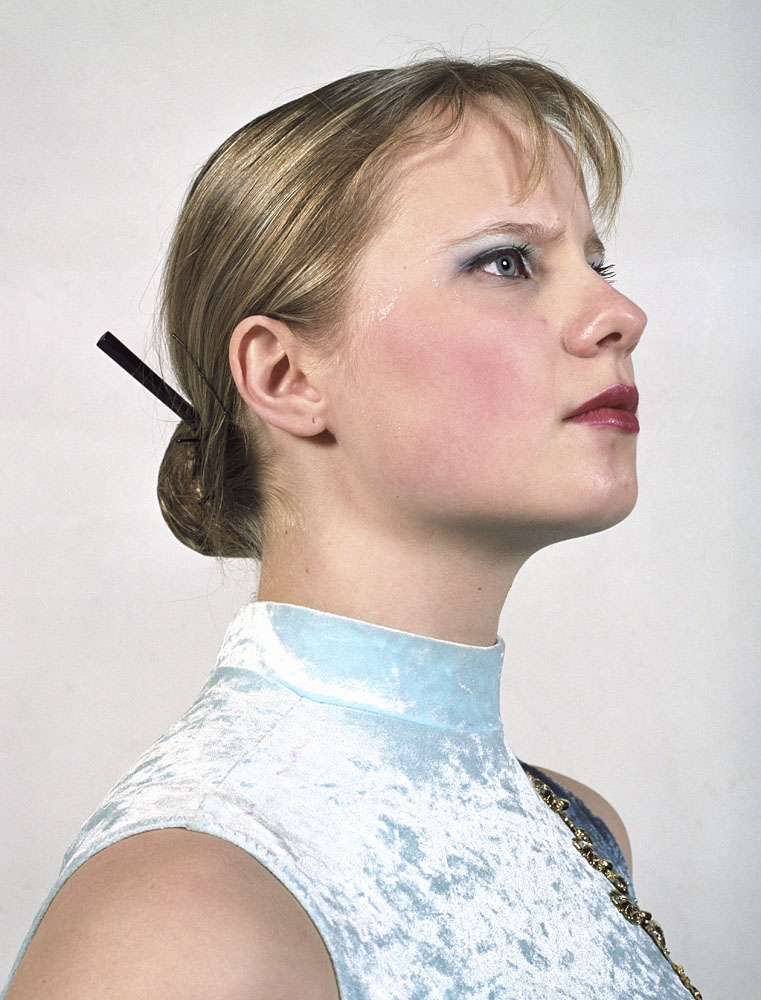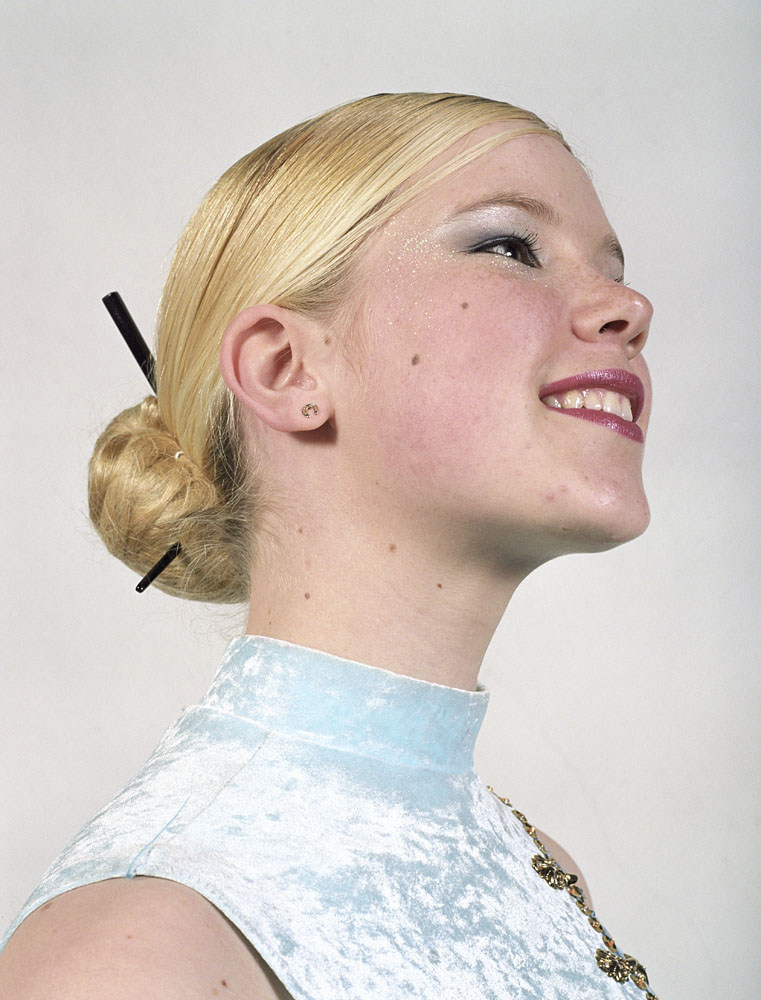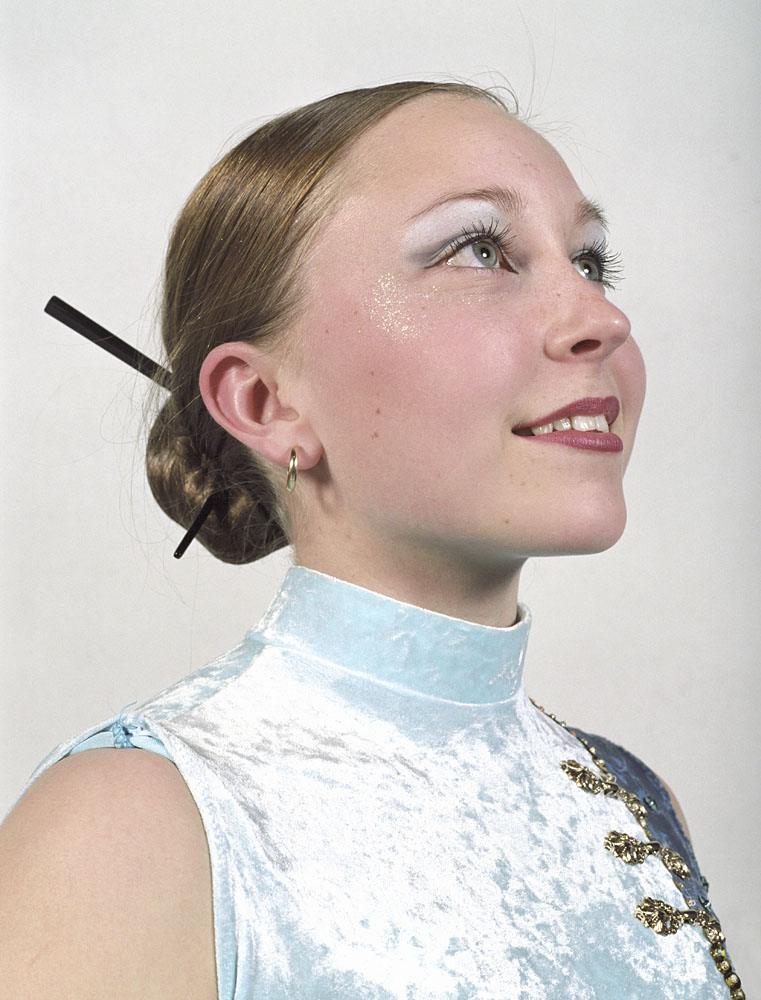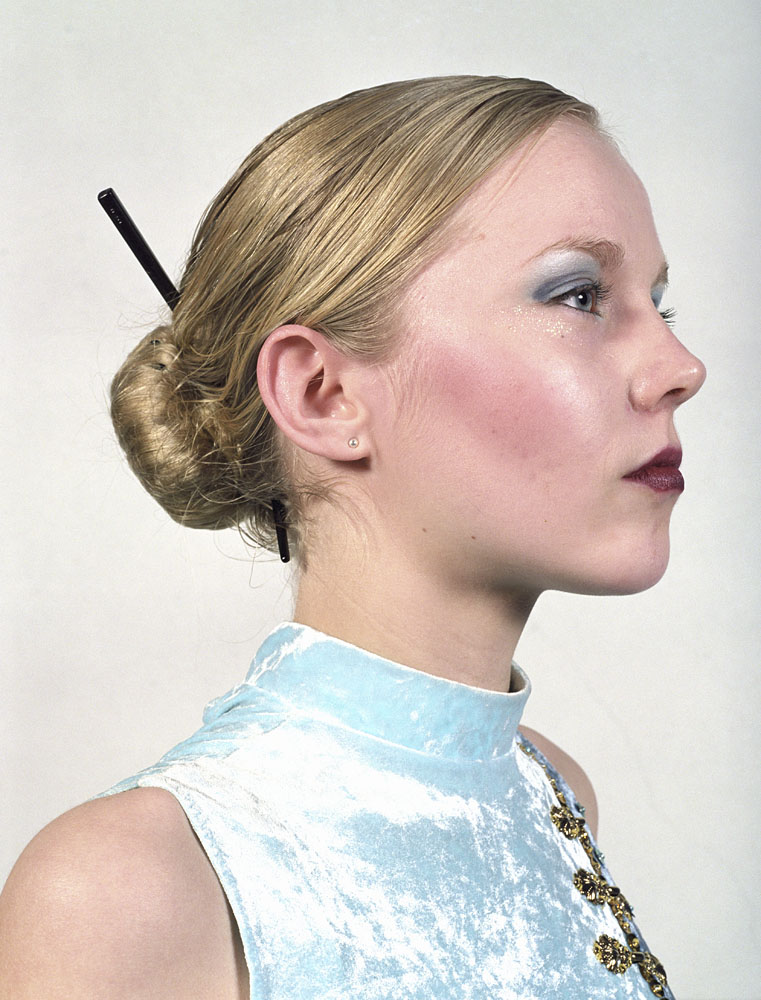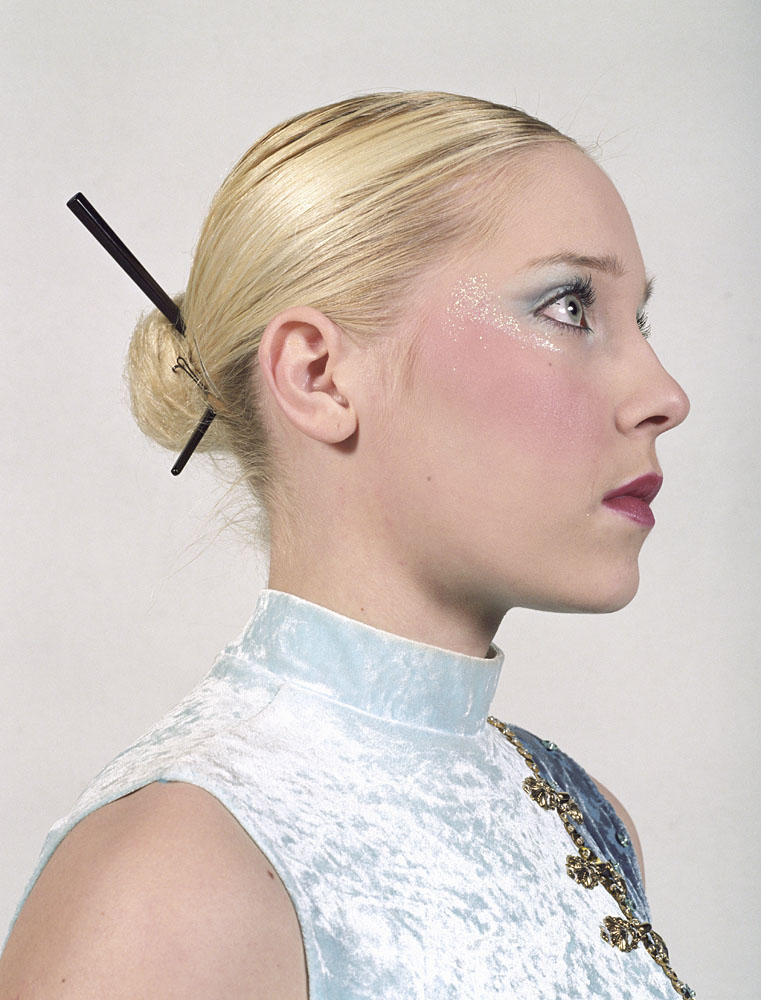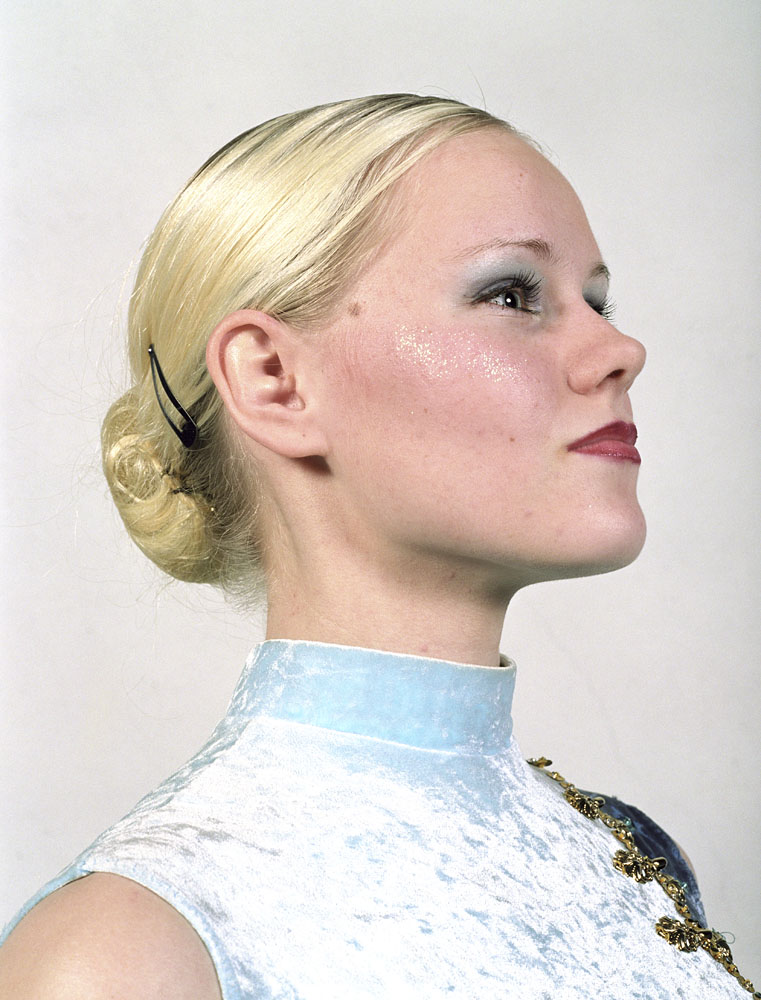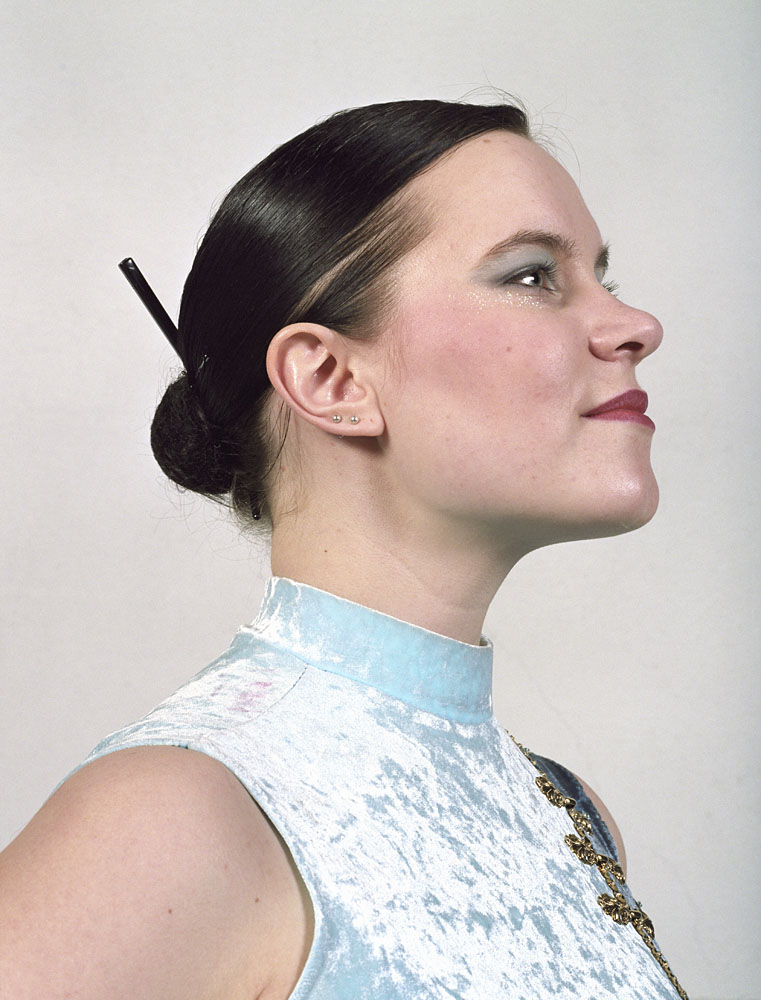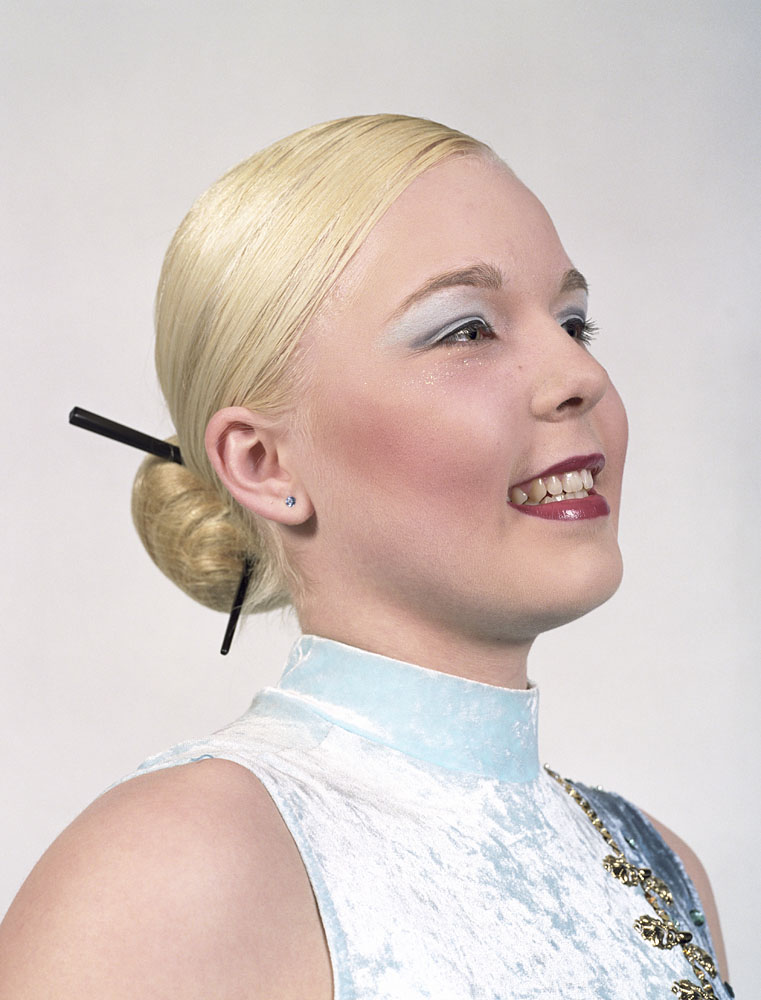Charles Fréger first headed north, for the ice, the cold, and the synchronised skating. He had first tackled this subject in 1999, when he was an art student in Rouen. He photographed the teams from Italy, Canada, the United States, Switzerland and Finland who had come to compete in the French Cup in Rouen. He returned to the subject at a skating club in the suburbs of Helsinki. He went there several times and got to know the teams during training. He filmed them while they were competing and interviewed the younger girls, listened to their stories, and observed the relationship each one of them had with her team. He was trying to discern the amount of reality involved in their fantasies about the team, which they perceived and experienced as a family. In doing so, he got closer and closer to the mythology of the group. His field of activity was restricted to the perimeter of the ice-rink building, the rink itself, the corridors, the changing rooms, and above it all – never visible, though very present in the image – the roof of the building, like a lid weighing down and shutting everybody in. The portraits are full length against a black background, with just a few spots of light; or a tight focus on the face – the only thing that stands out from the wall and the white leotards. There are various levels and different age groups. In this club there are the Little Steps – the children in the maroon leotards –, the Dream Steps, Ice Steps and the Steps on Ice who, by dint of dreaming, have managed to get there. They are the ones who pose with a winner’s face – a big smile, which only appears in the picture because Charles Fréger sees it as part of the uniform. They all learn to do it; the head is held high and the gums smeared with Vaseline to make sure the smile is as radiant as the sequinned leotard. This is the first series where the model is photographed, not face-on, but in three-quarter view, eyes directed upward towards the heights of sporting glory.
